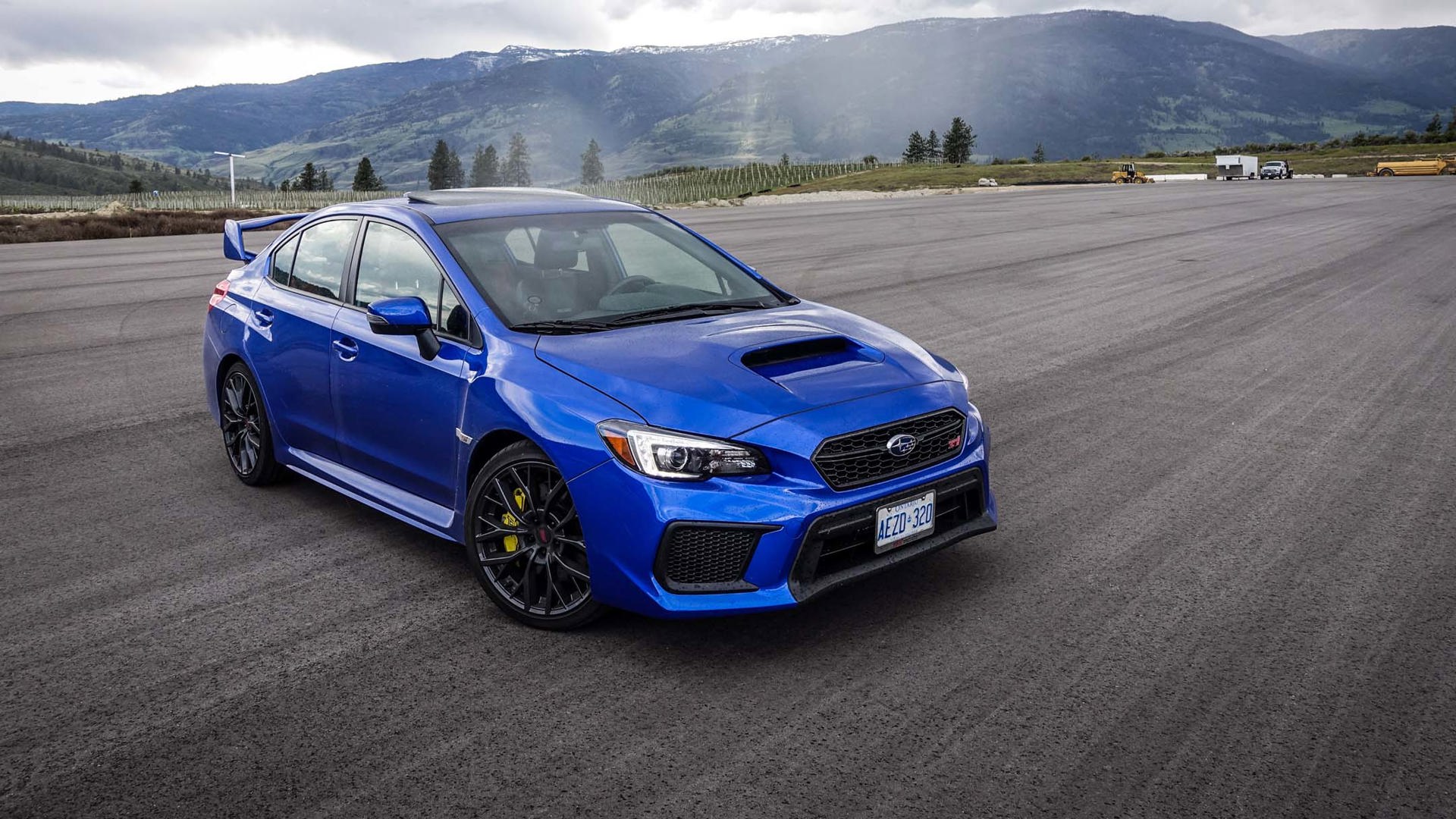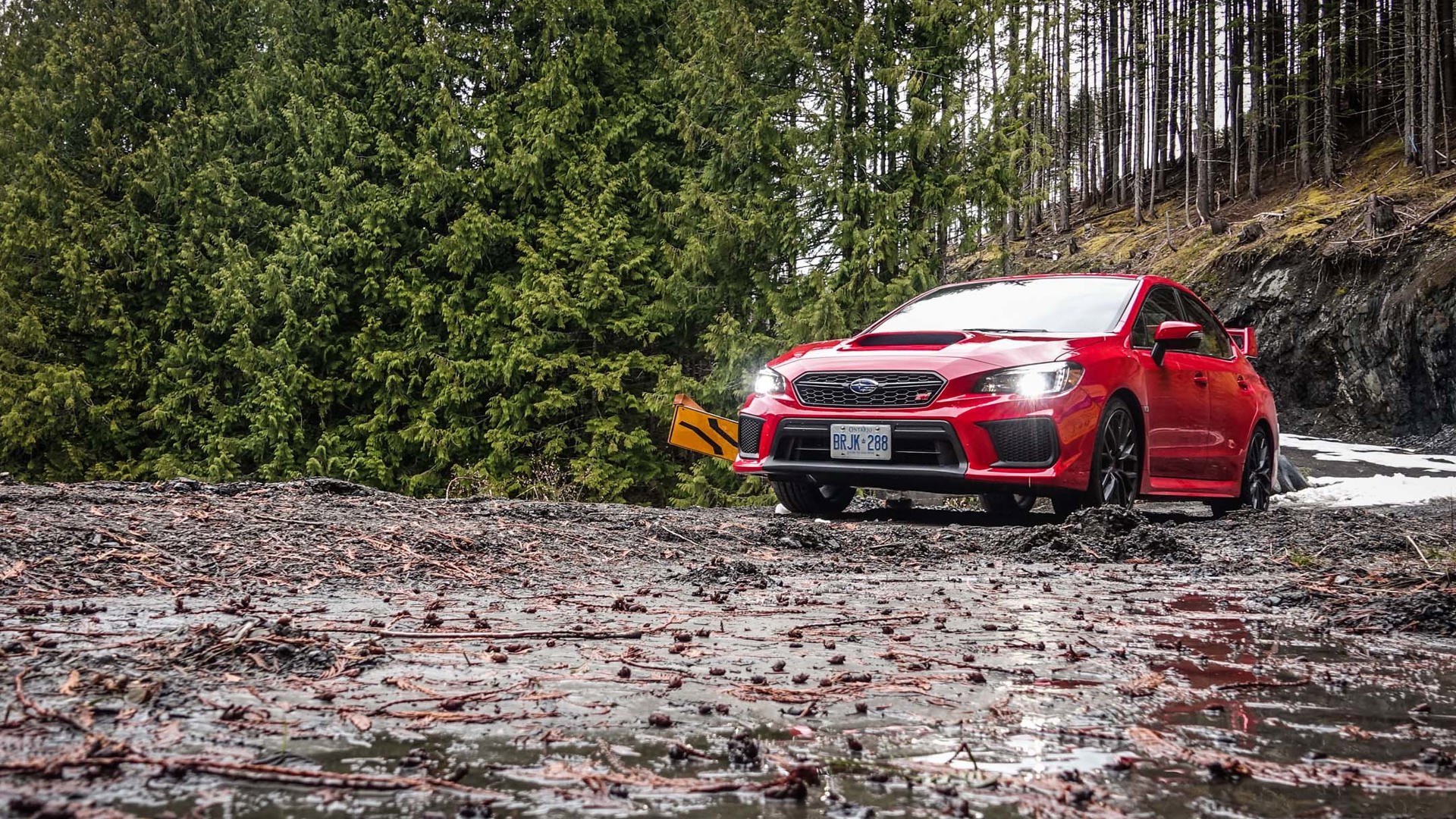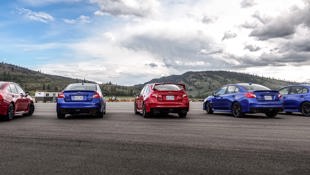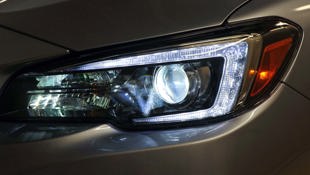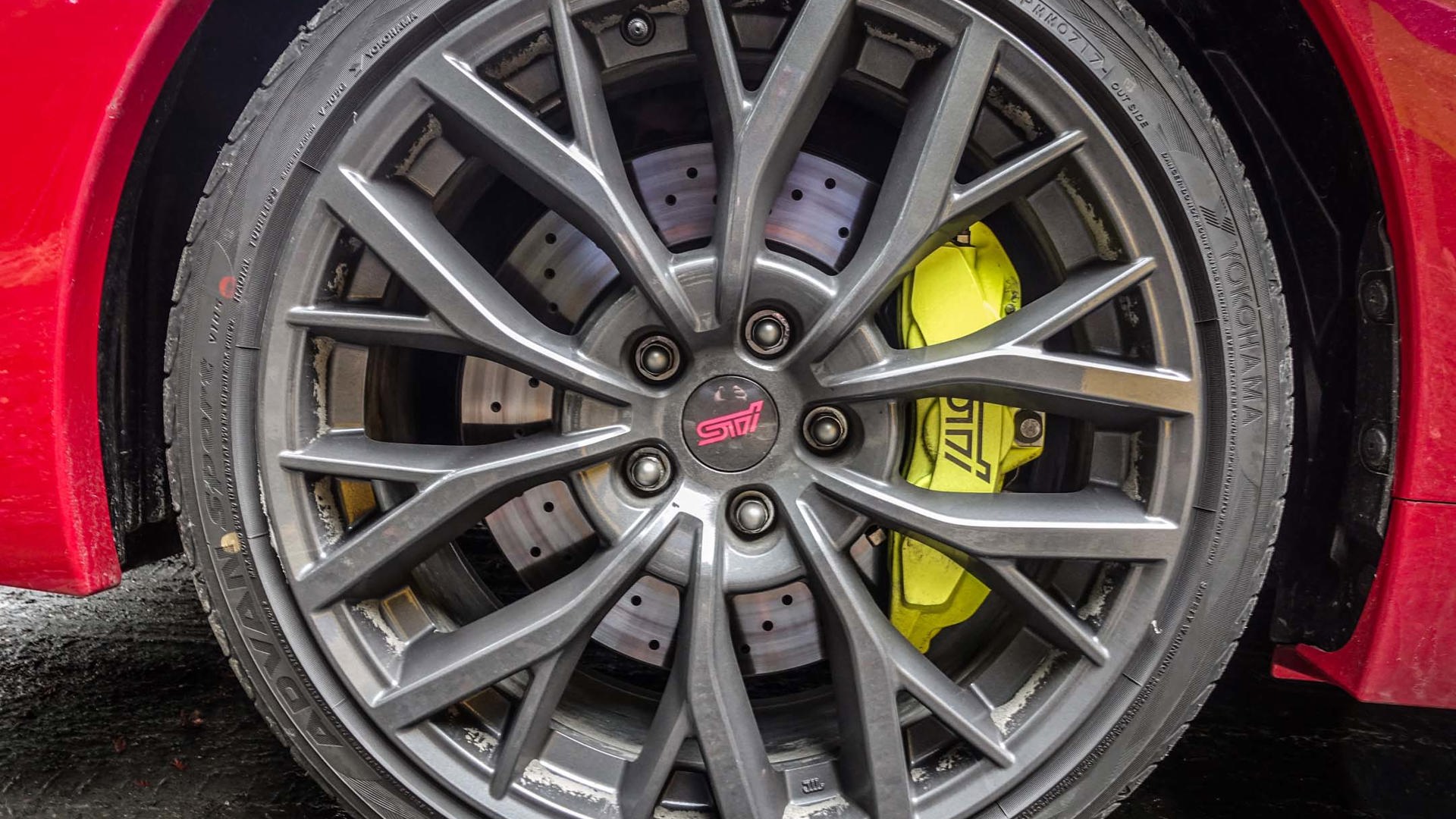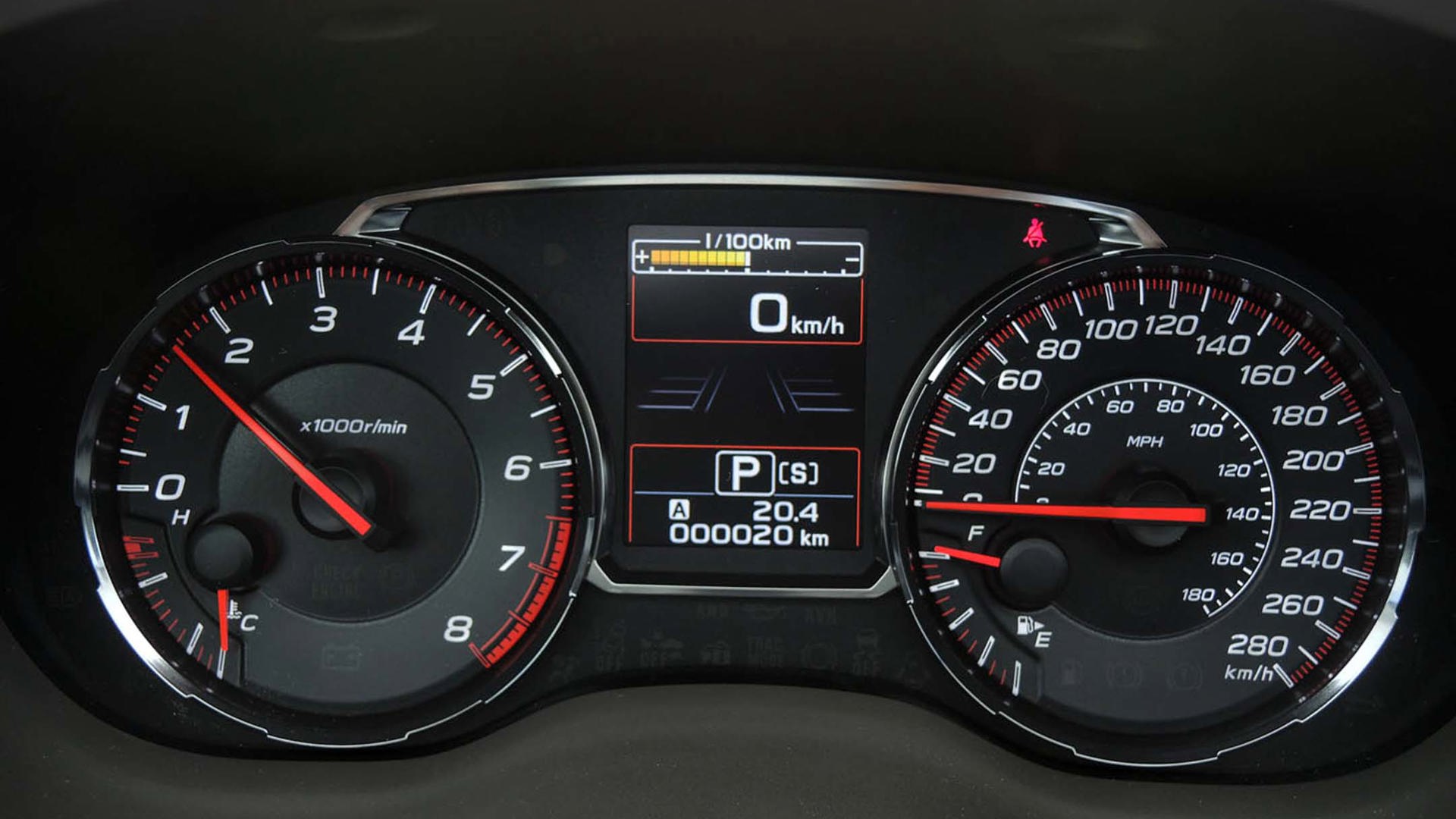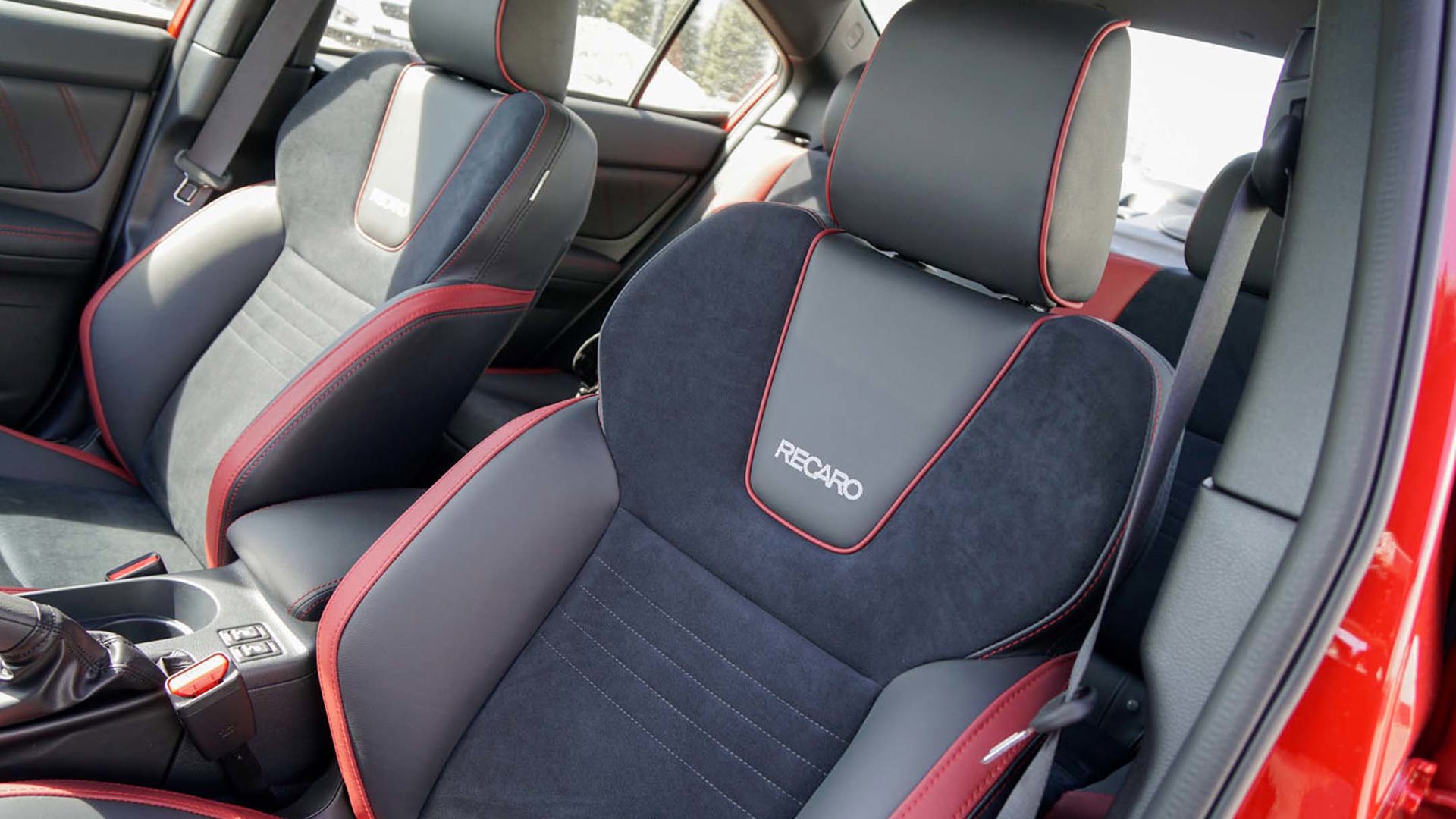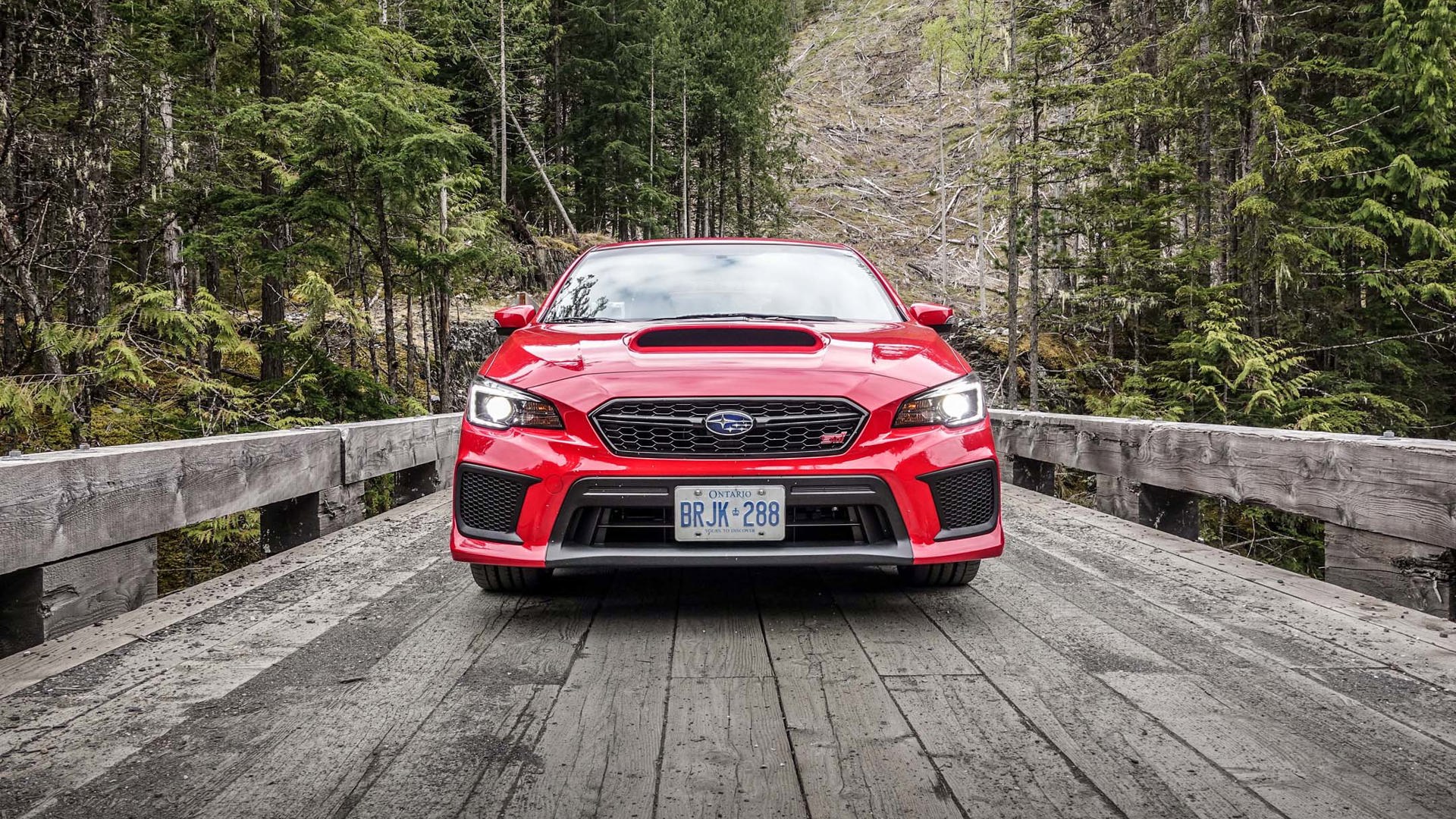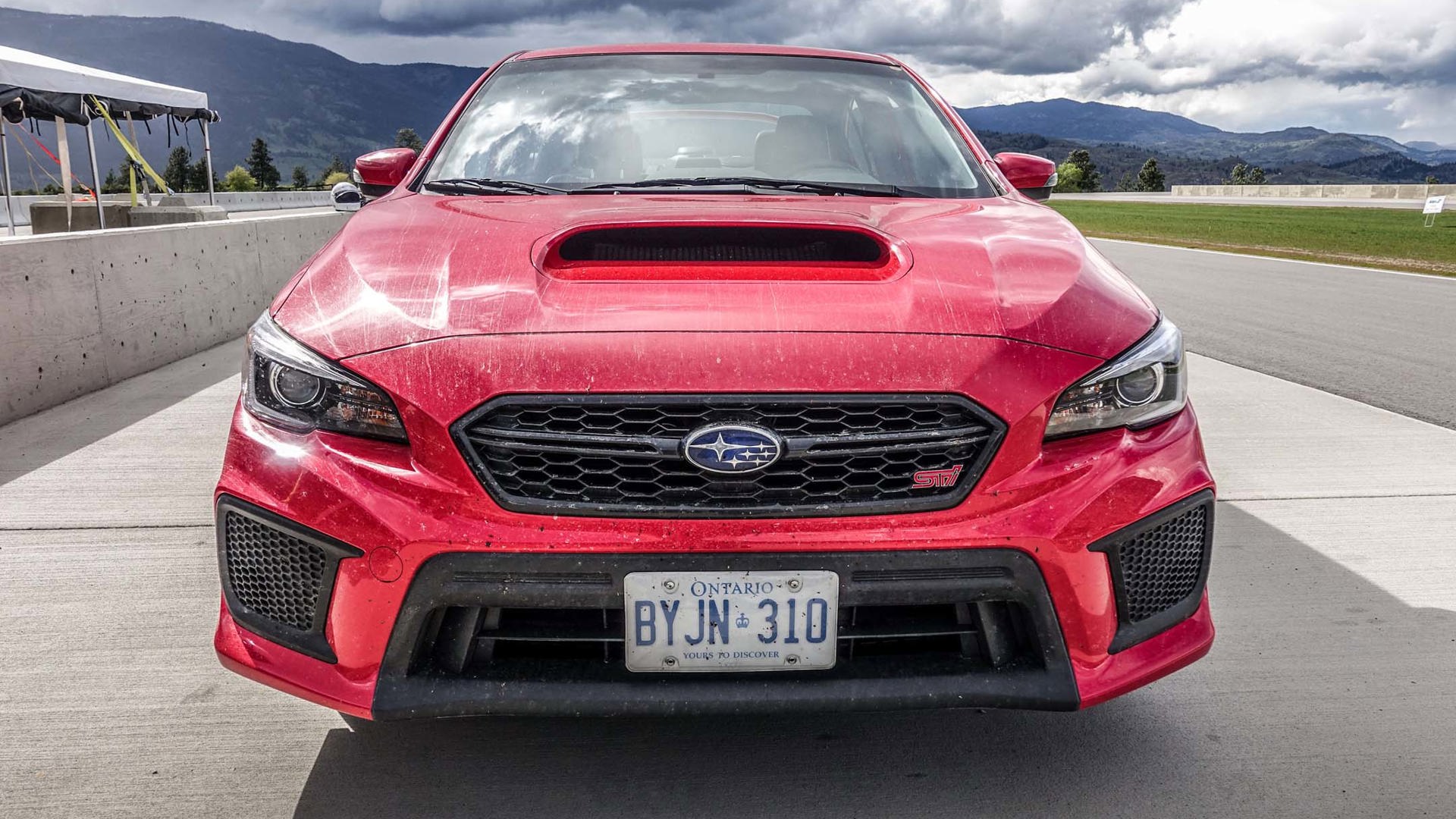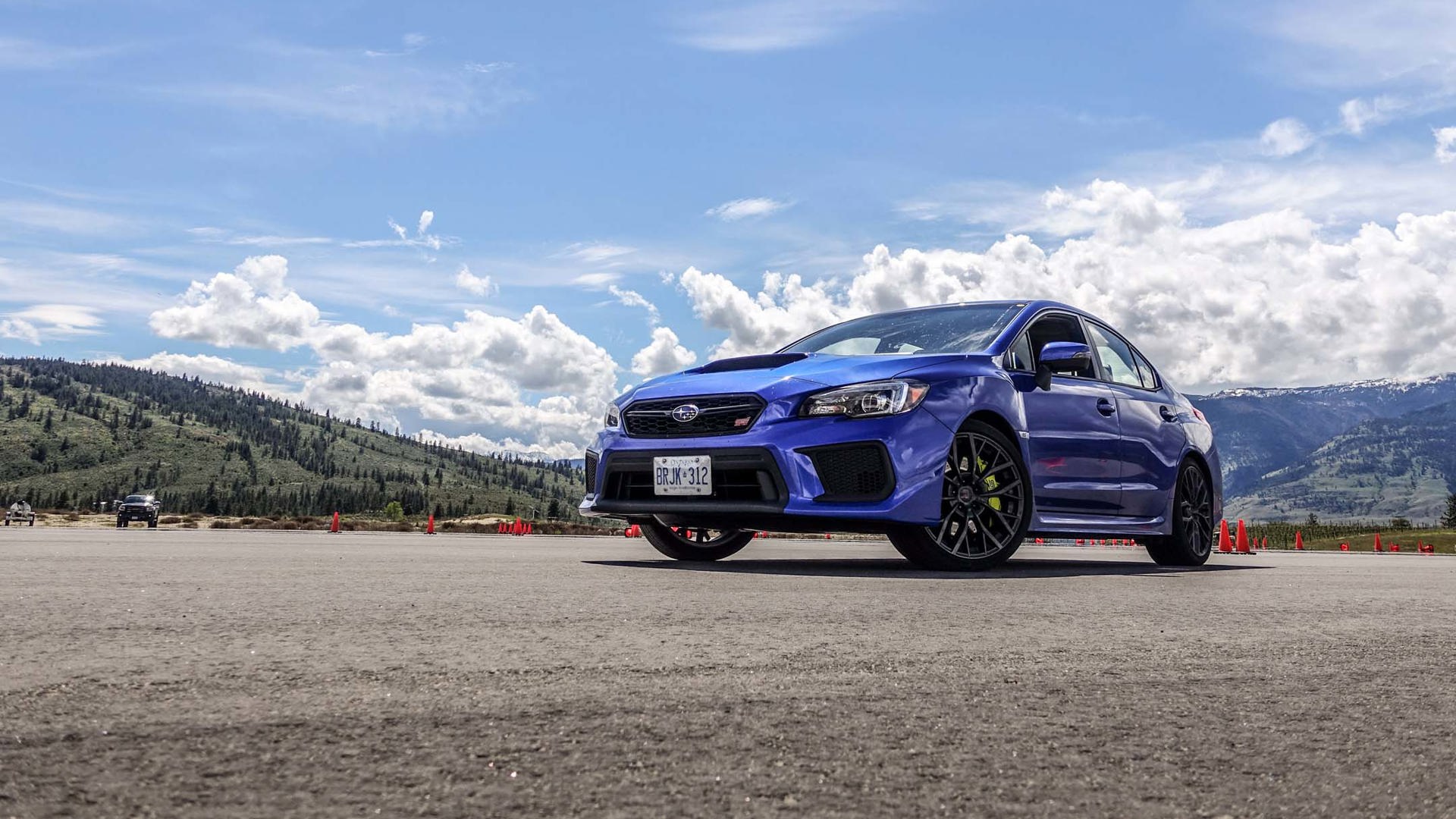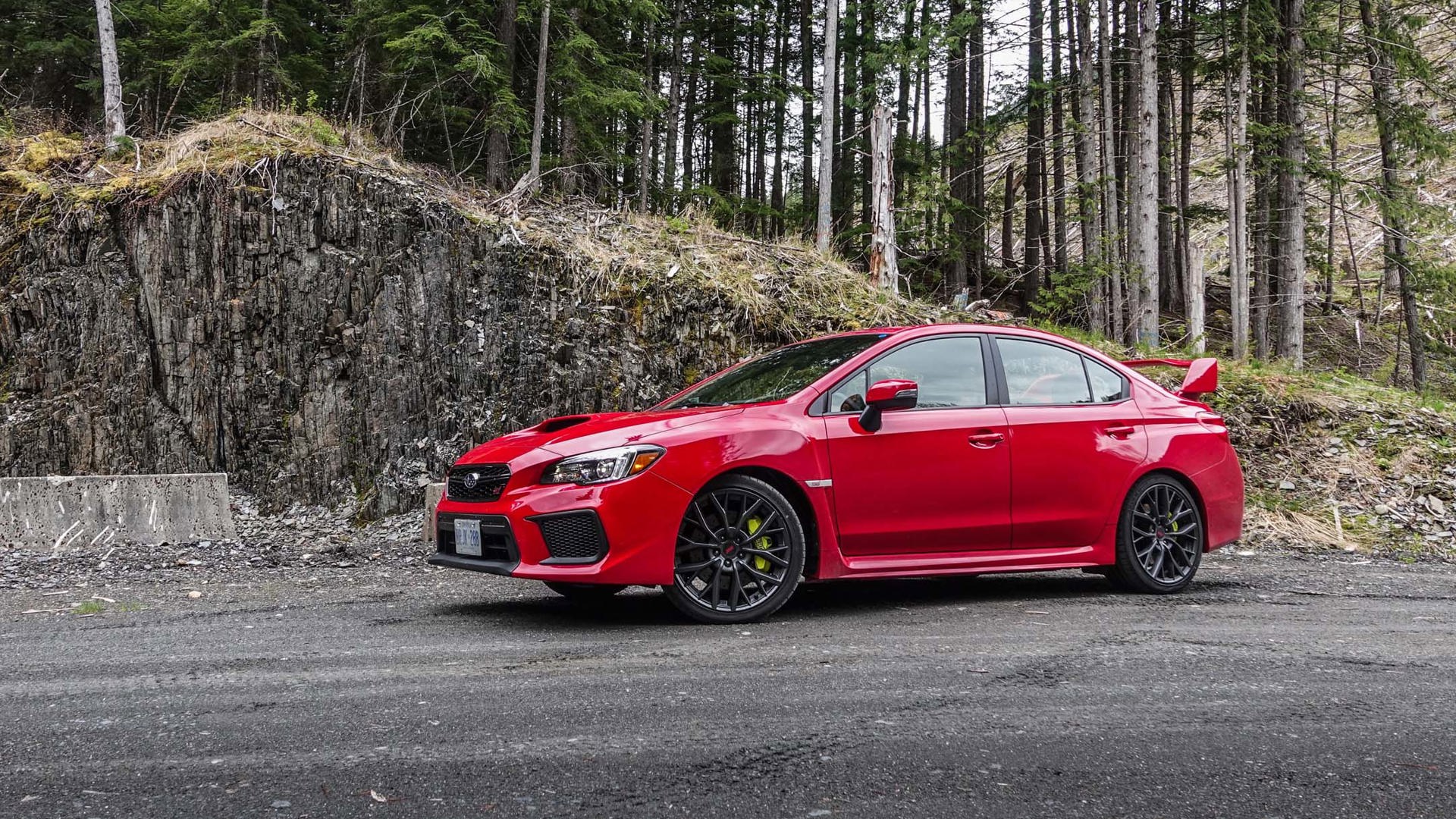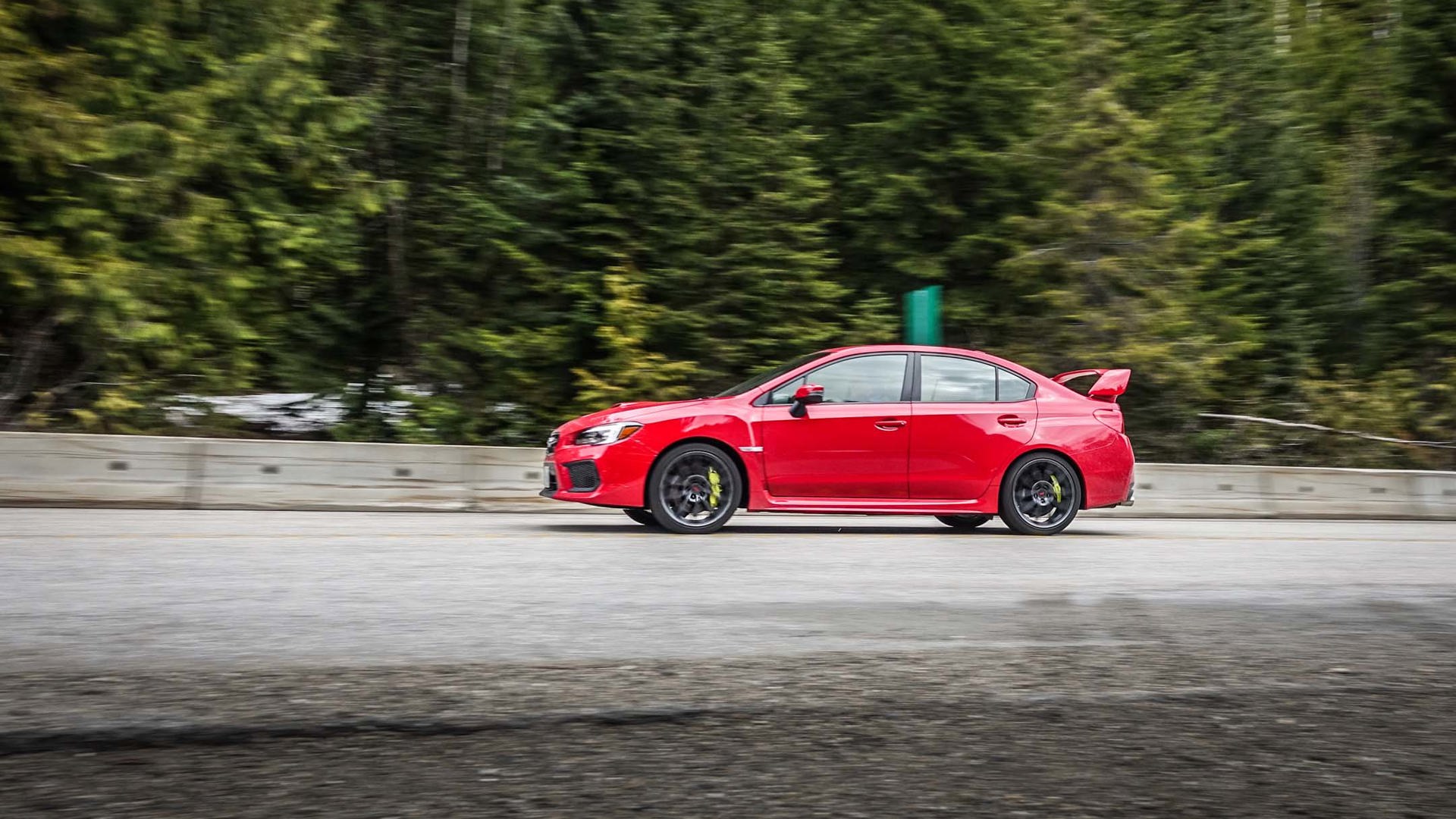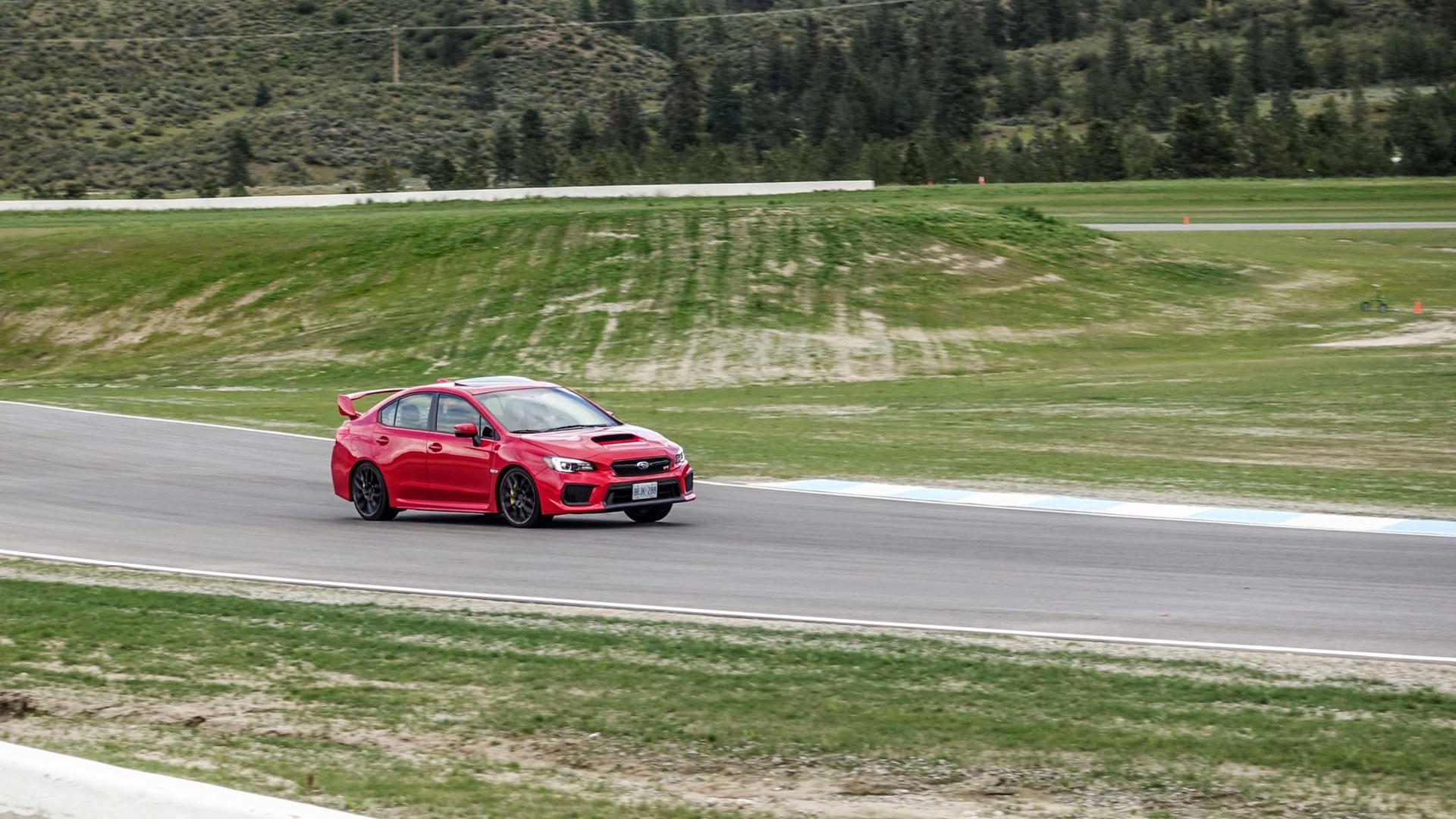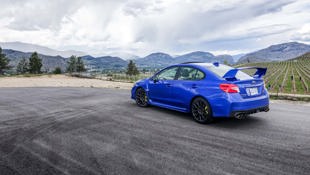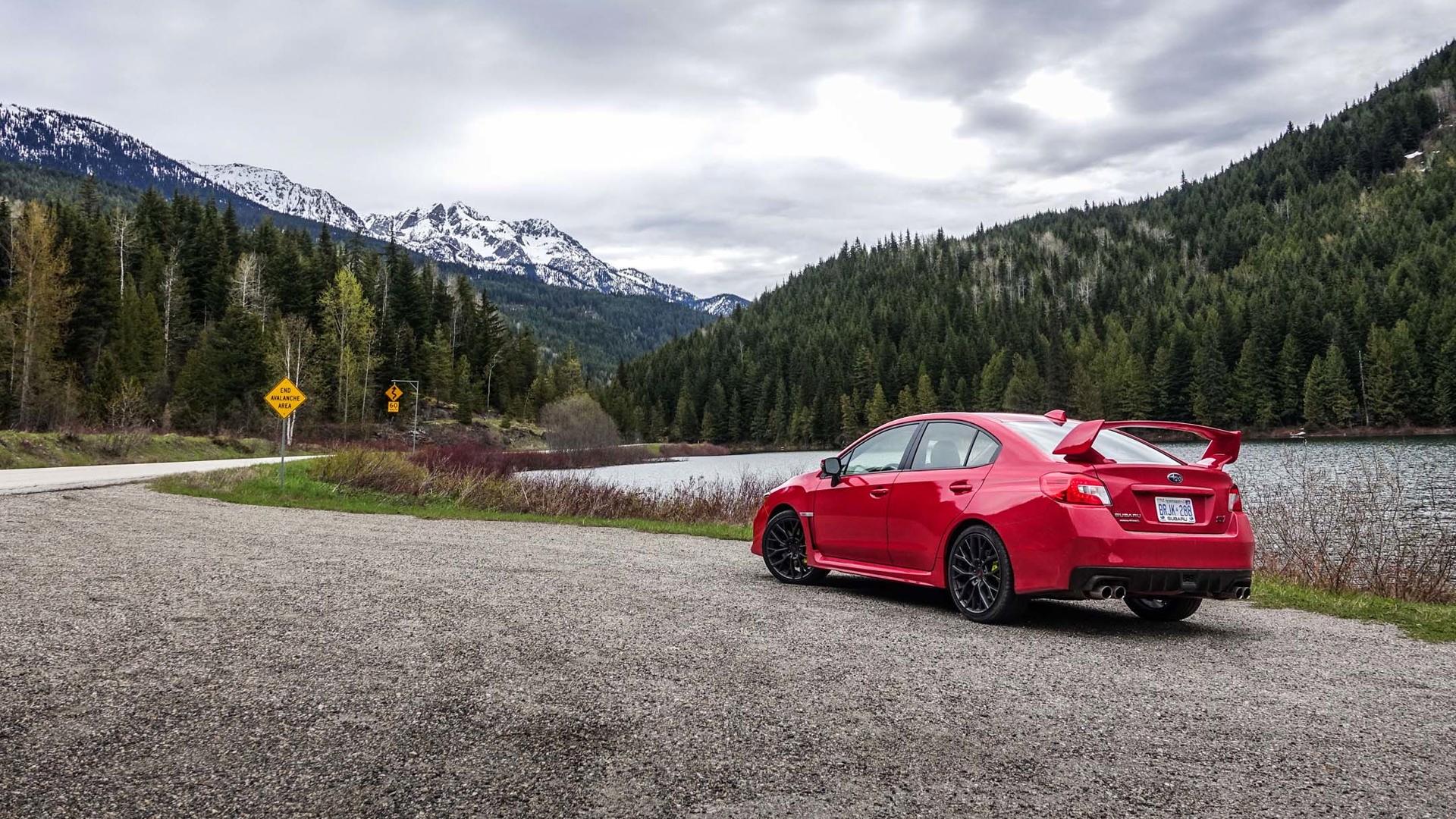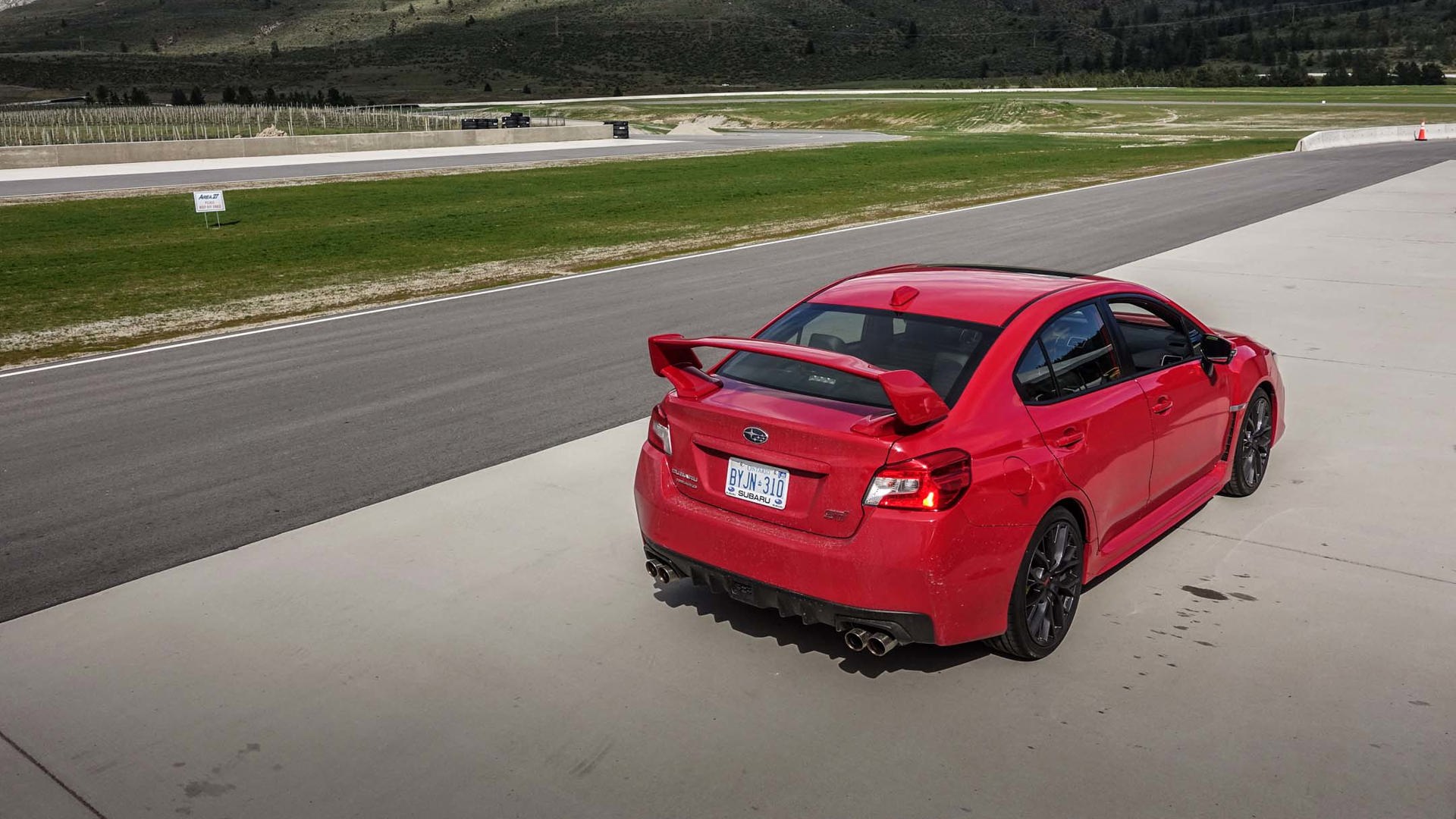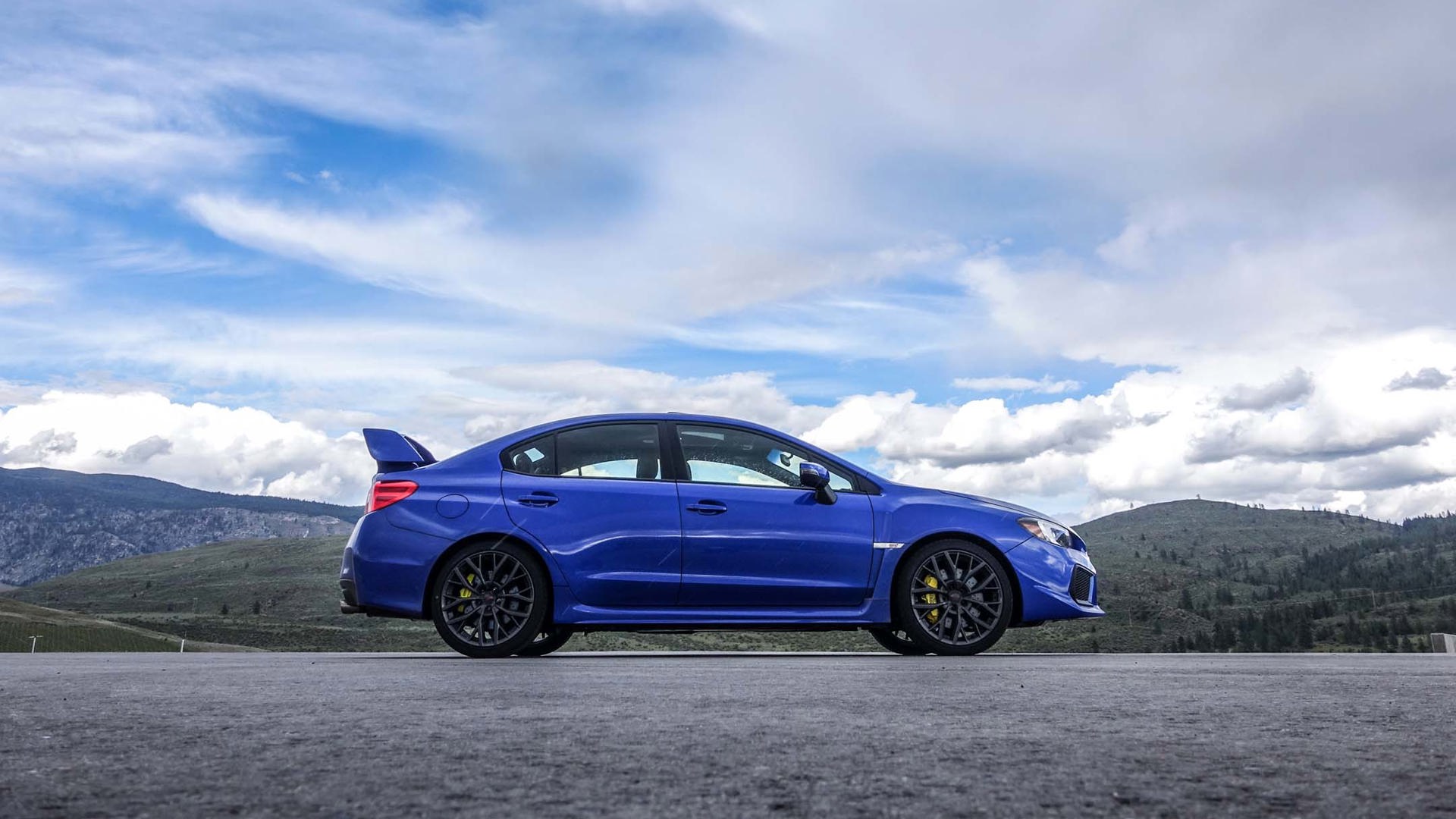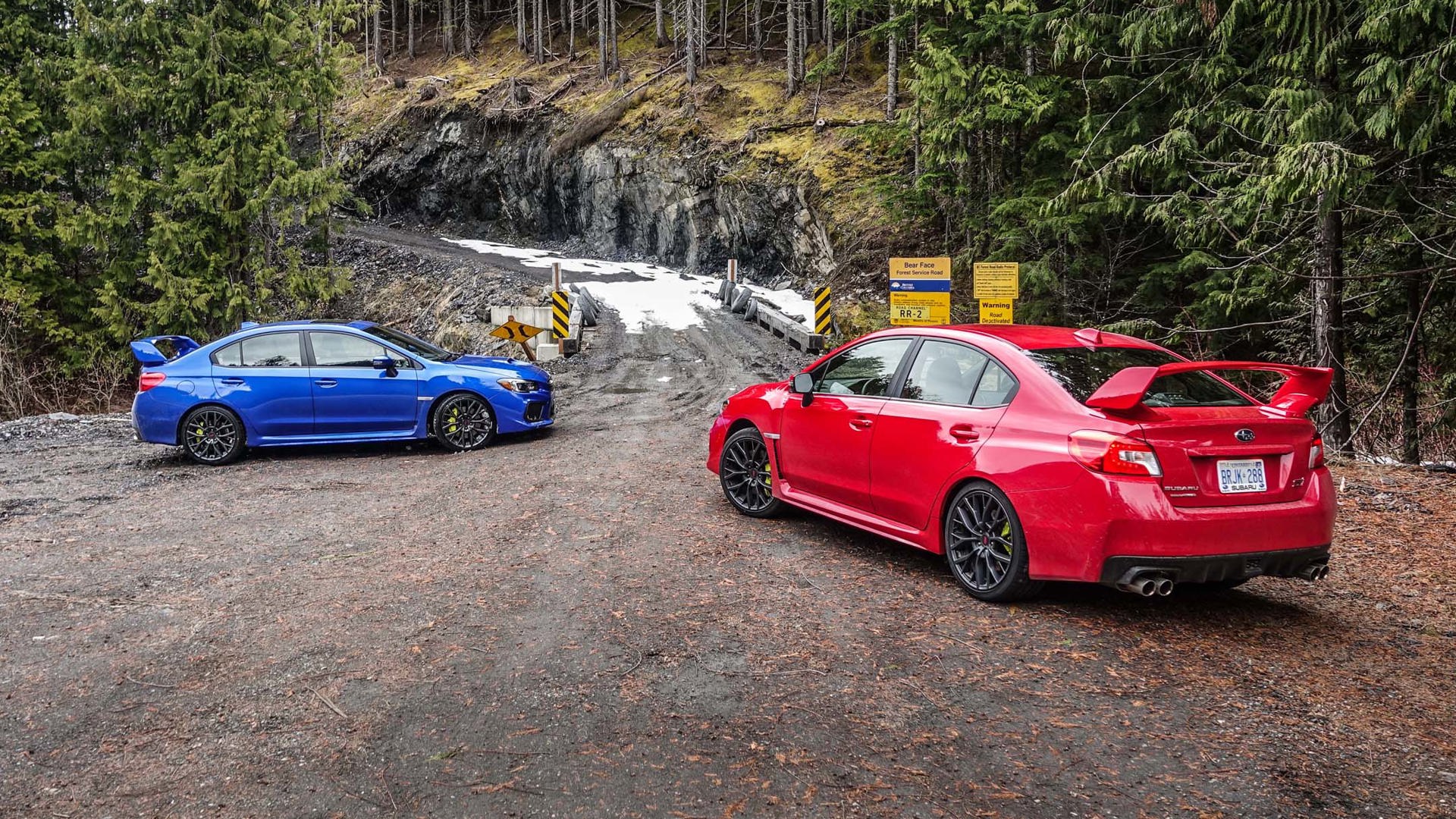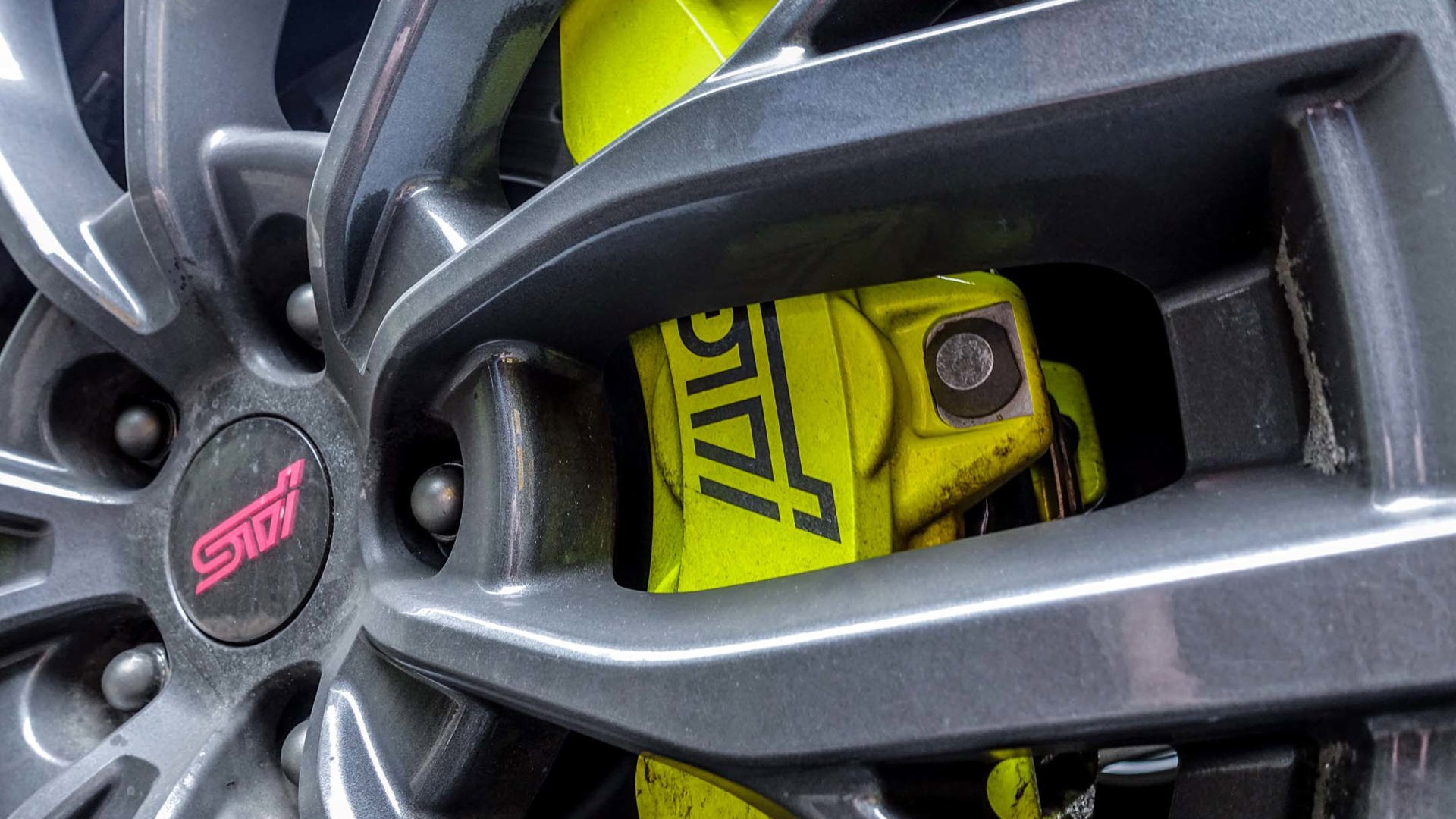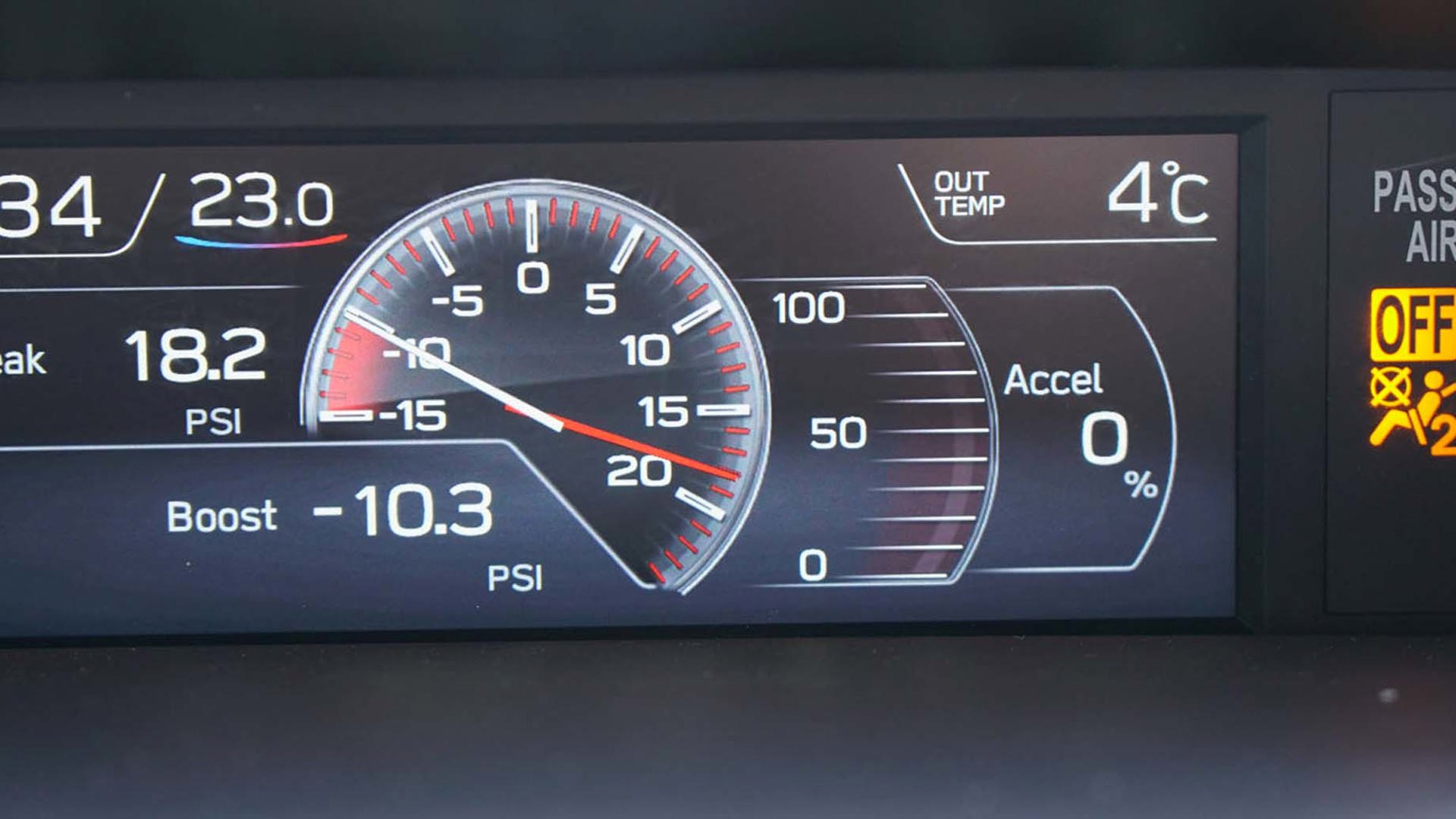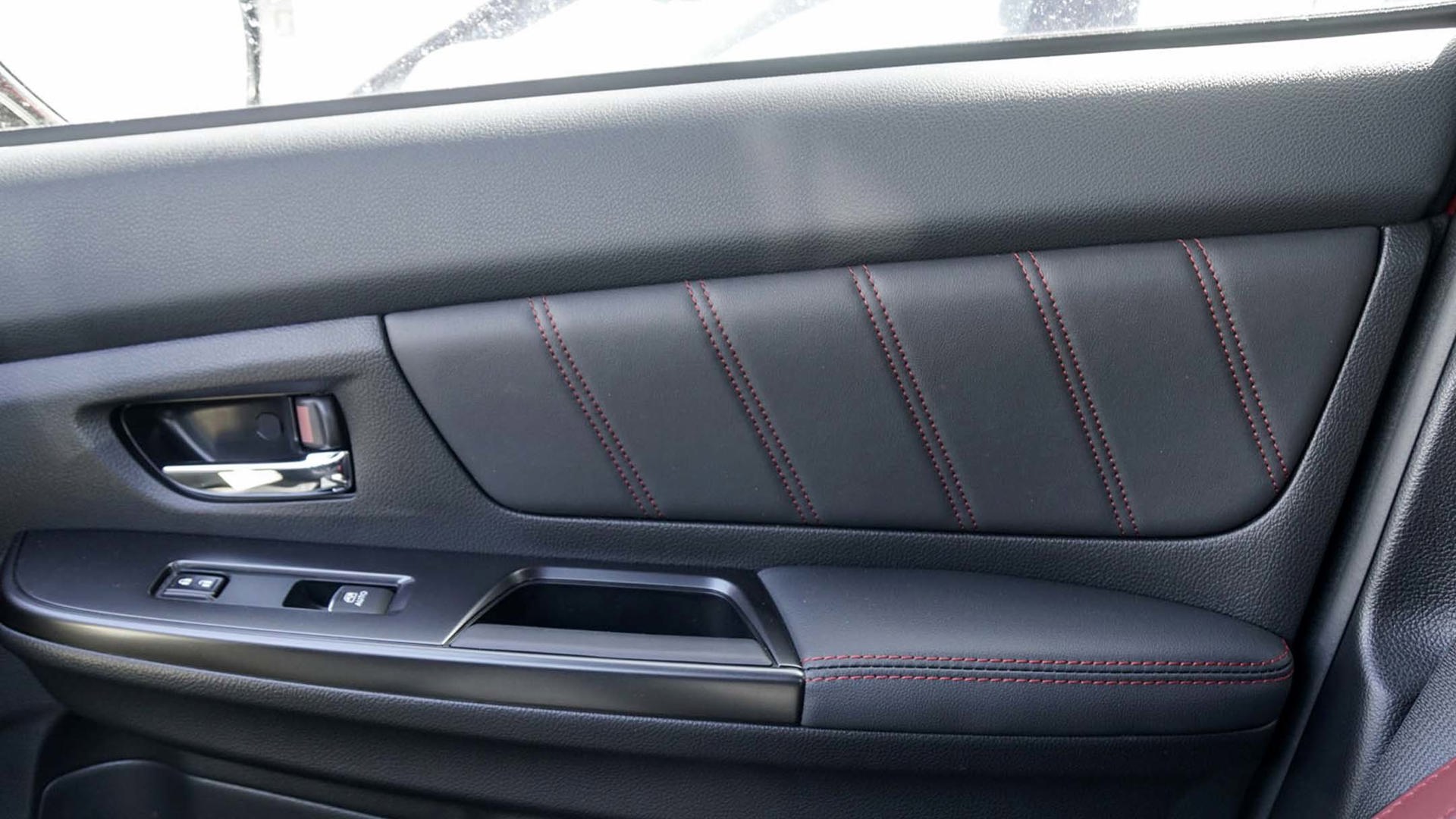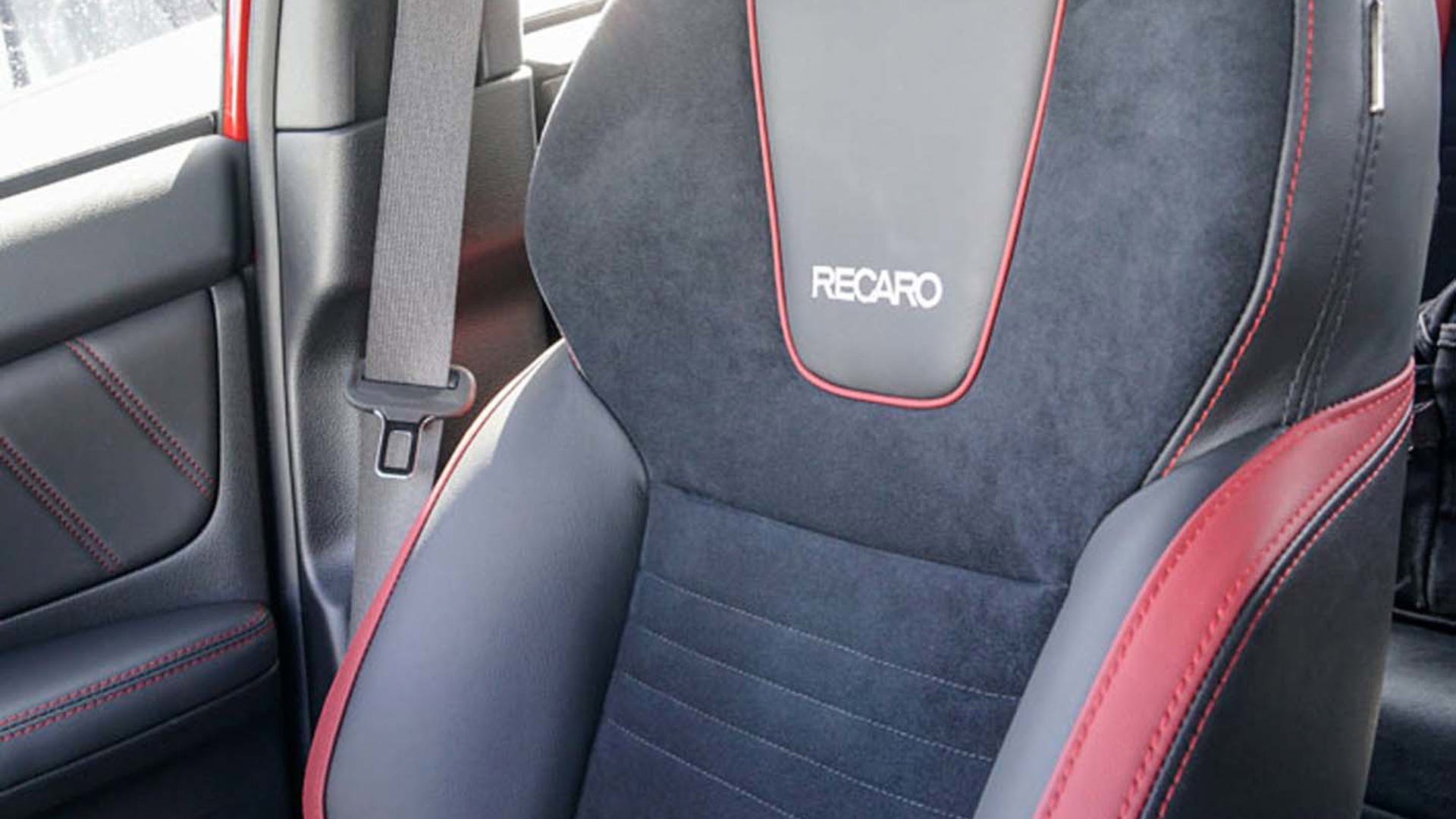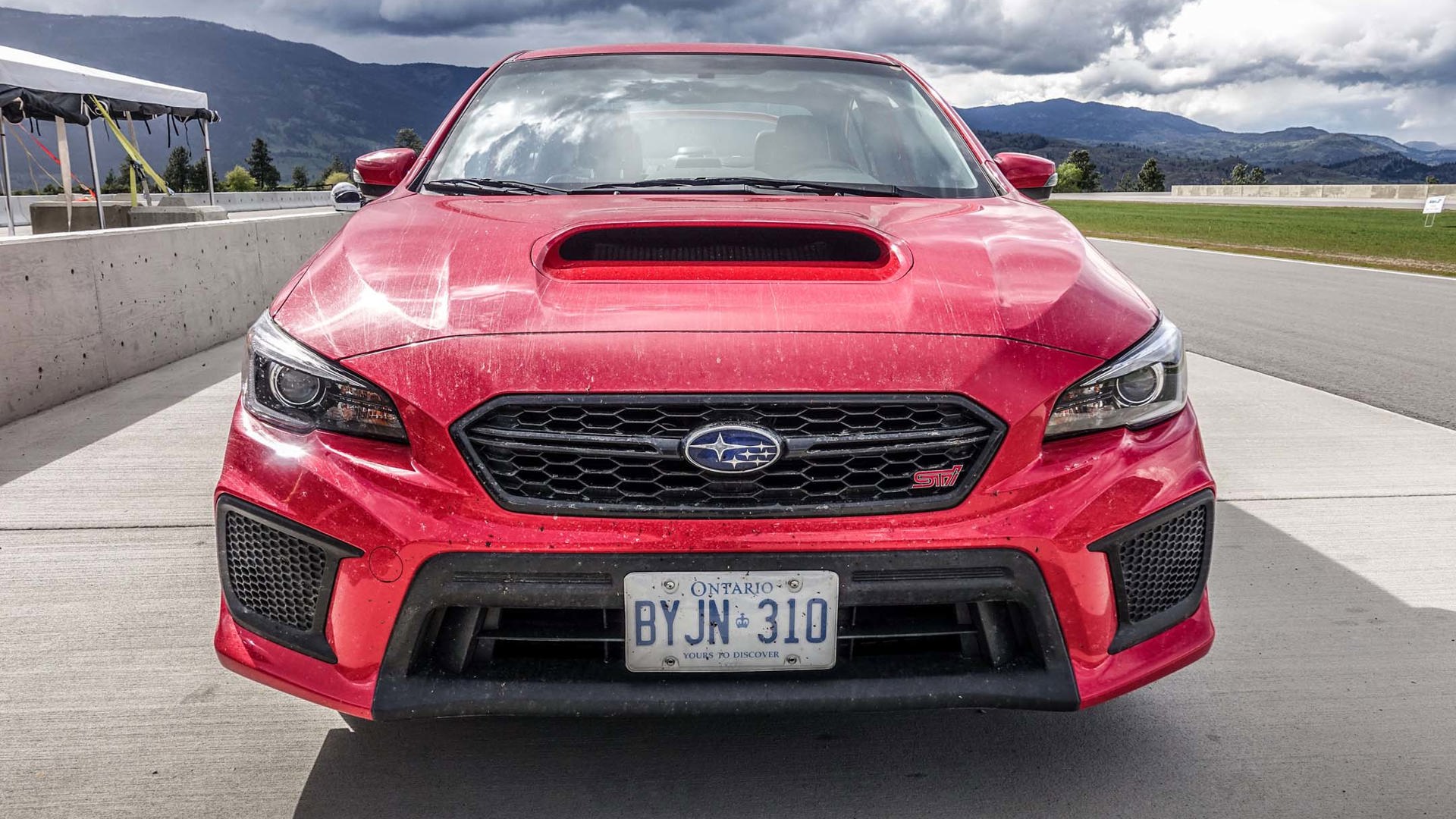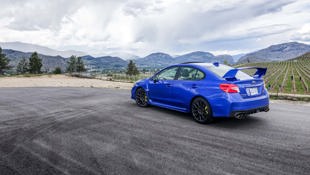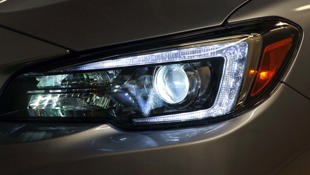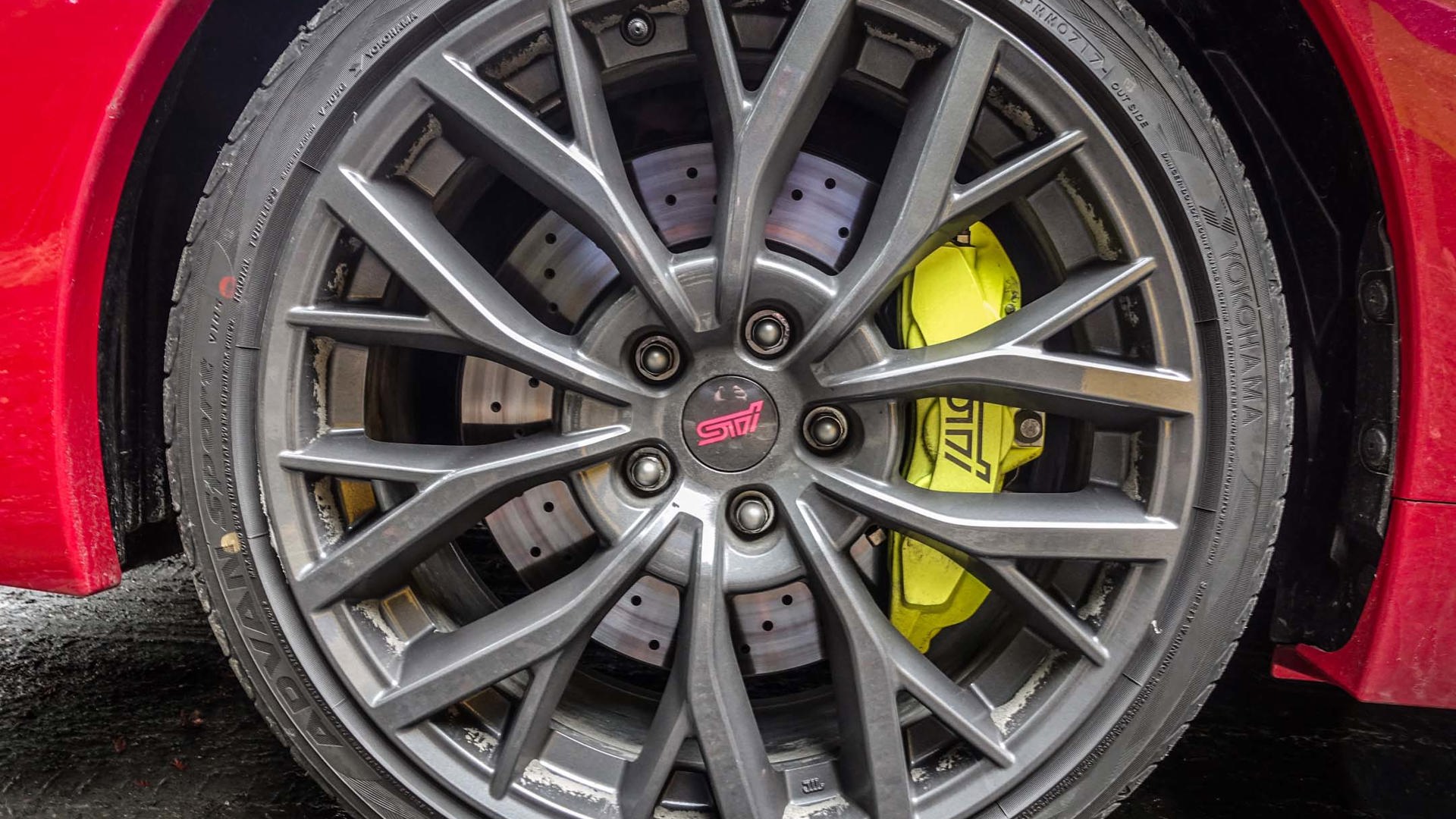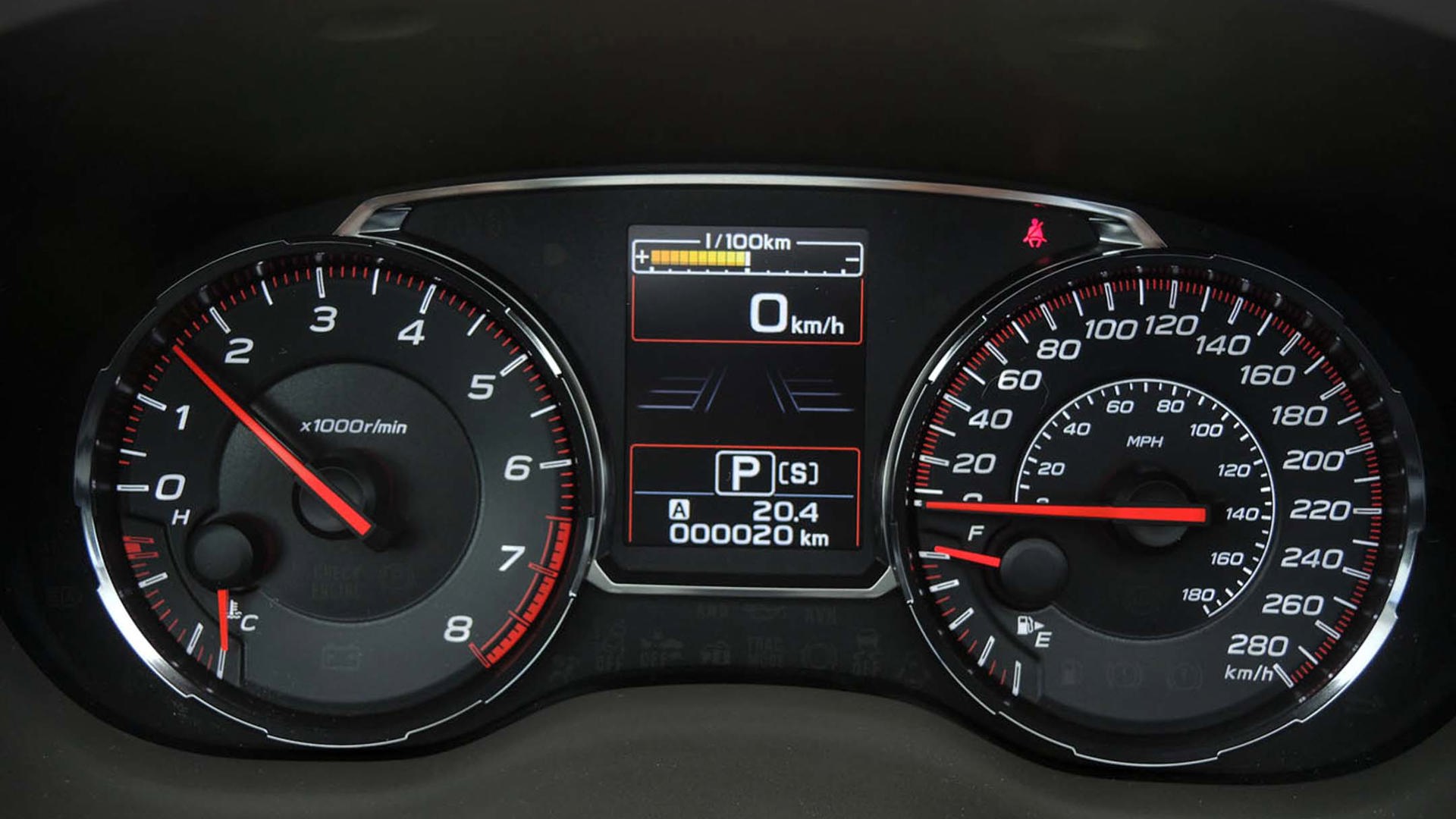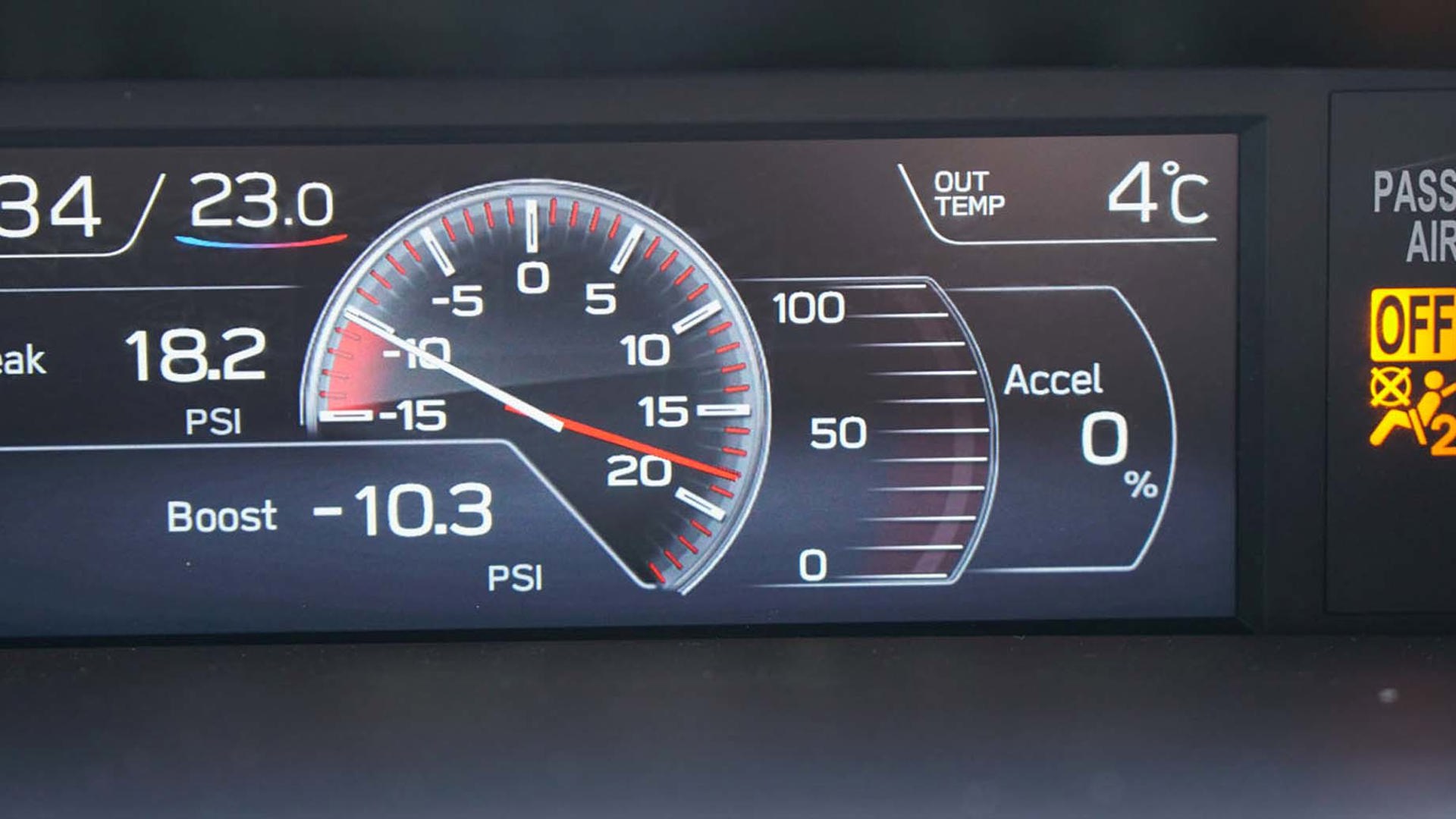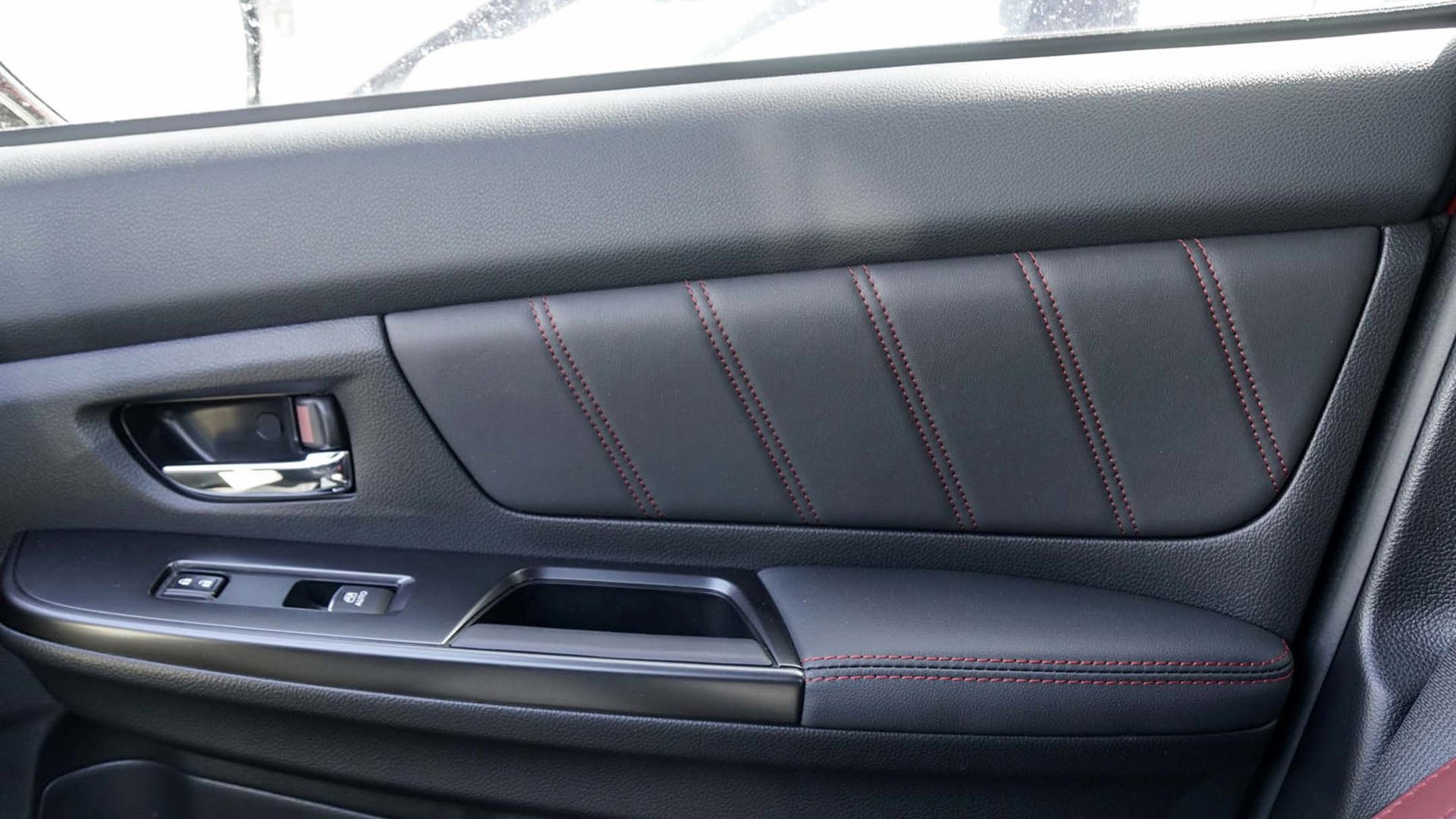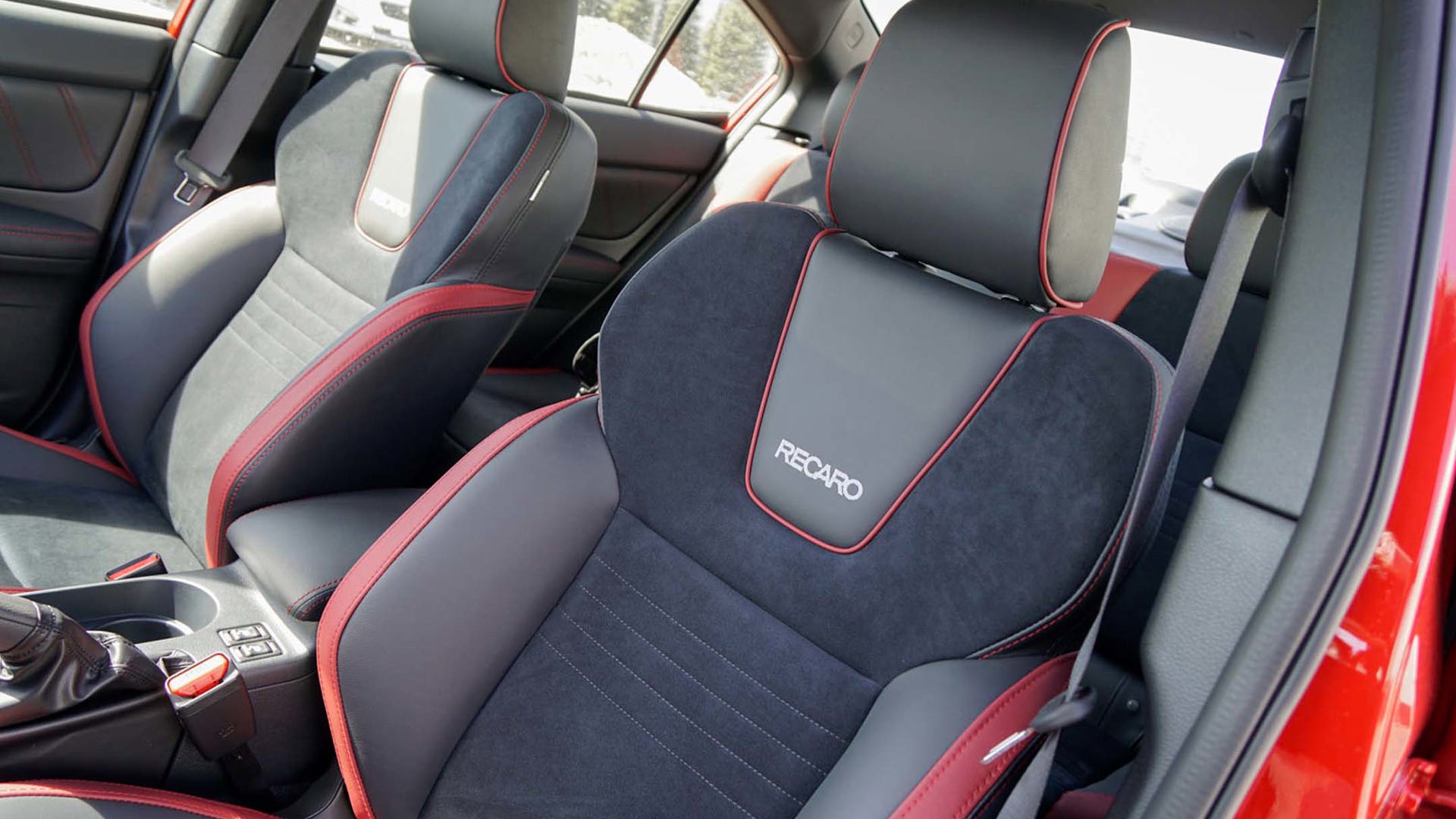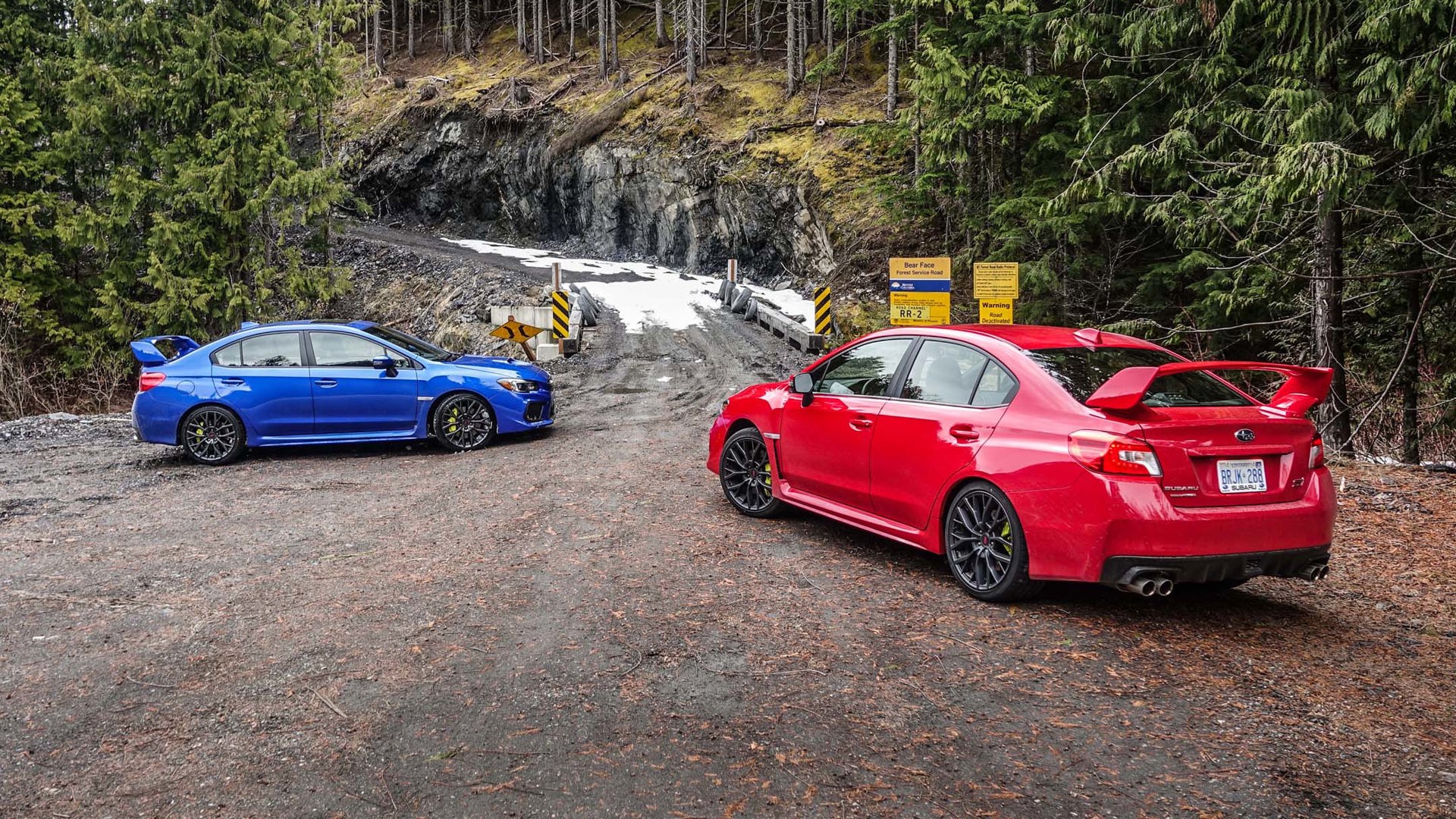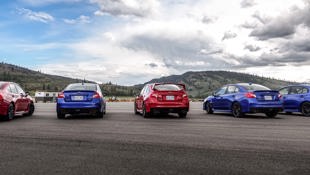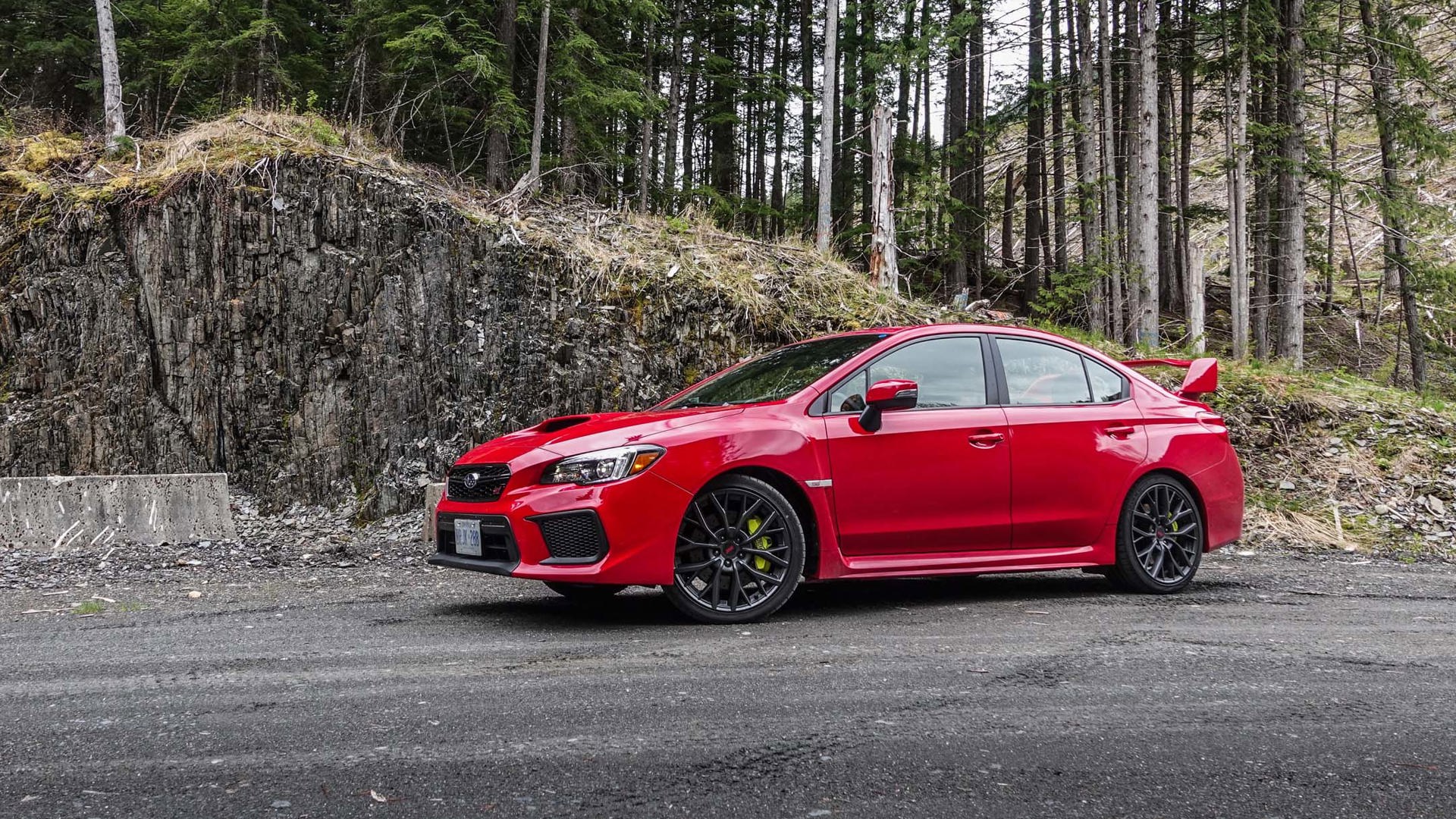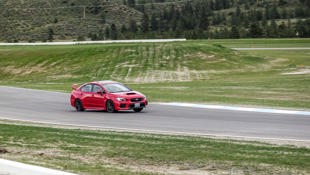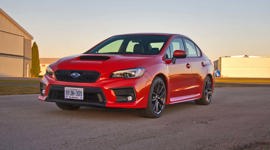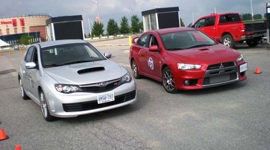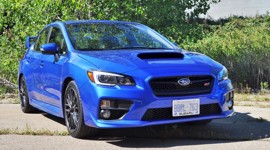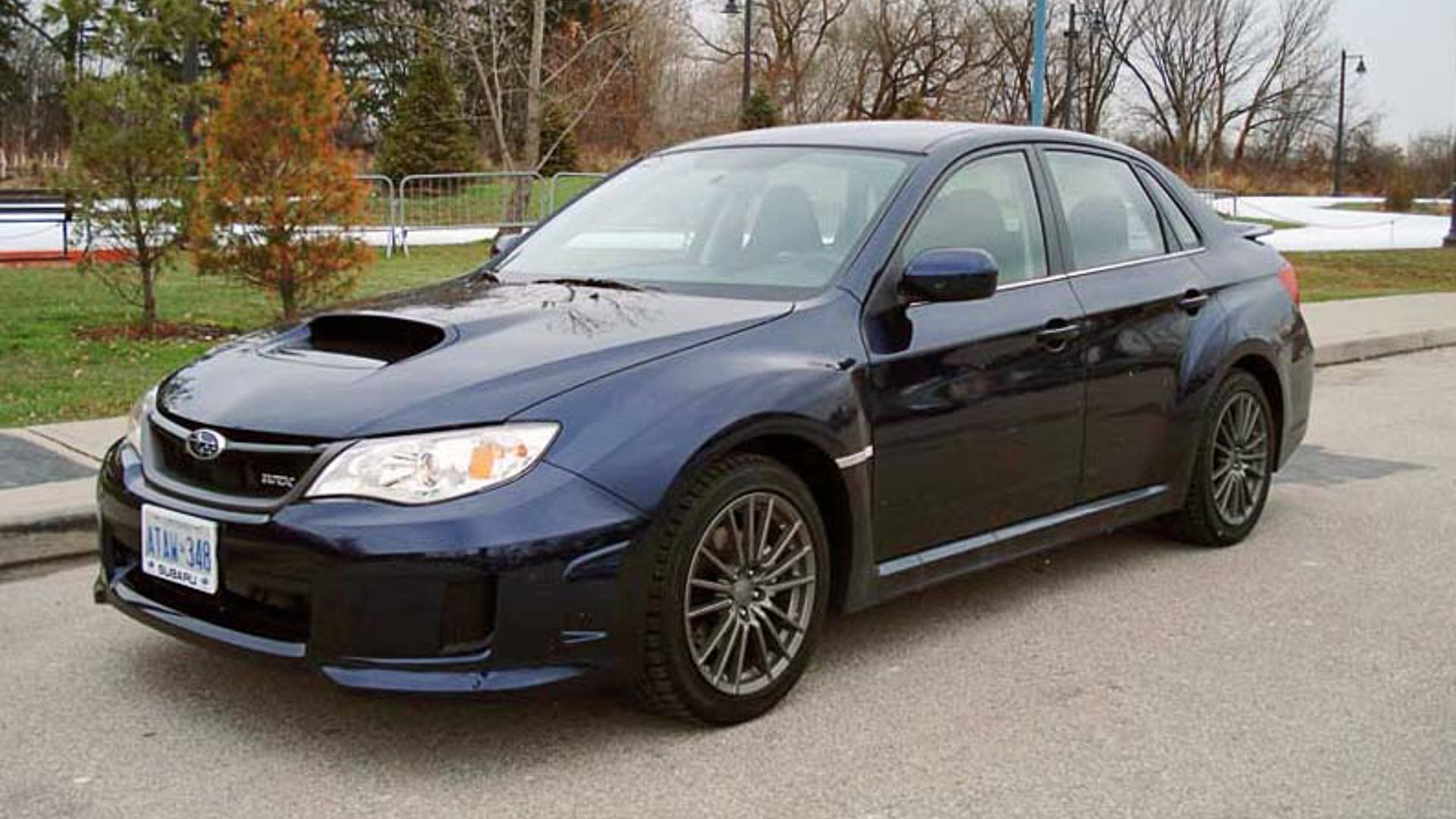Gravel strewn across an apex. A blind crest on an unfamiliar track. Frost-heaved pavement on a short passing section. Downhill on the far side of a mountain on a road so wriggly it must have been paved by drunks. Snow. Rain. Dirt.
Pretty much the best choice in the sport compact segment, assuming you get out of the city from time to time.
Bring it.
When you’re out in the wilds of Canada with who-knows-what around the next corner (D’oh! A deer! A female deer!), there’s nothing better to have under your butt than one of the all-terrain running shoes from Fuji Heavy Industries. Mildly updated for the 2018 model year, they remain pretty much the best choice in the sport compact segment, assuming you get out of the city from time to time.
What’s that – we’re two paragraphs in or so? Okay, time to start ranting and raving about the lack of a hatchback. Get on with it Subaru! I’m sure there’s some esoteric compliance or marketing decision for the lack of a five-door WRX, but there’s no mechanical reason for it. One of the techs at Vermont Sportscar – they build the US rally team cars – has already fully swapped his Crosstrek to WRX specs. If you, like me, are still waiting for Subaru Japan to listen to the demands of some of their most ardent North American fans, then bad news: there probably won’t be a major change until the 2020 model year, and even then, don’t count your Levorgs until they hatchback.
In the meantime, I have one tiny piece of comforting good news for you. In response to customer demand, Subaru has finally fitted both the 2018 Subaru WRX and the Subaru WRX STI with proper roof mounting points for a crossbar. No more straps wrecking your door seals – if you can’t get a hatchback, at least you can now strap your bikes/boards/children to the roof. What? I didn’t say children. You said children.
Yes, the front ends of both cars are lightly changed, never mind that. The better news for people who own a suit instead of a flat-brim Monster hat can be found ’round the rear of the STI. See the giant wing? It’s not found on the base car and is a no-cost optional delete on the highest trim version. No, an STI with a lip-spoiler isn’t quite as under-the-radar as a Golf R, but it’s certainly a little more grown-up.
And then on the inside, the STI gets red seatbelts. Oh dear. Maybe don’t give the boss a ride to lunch. However, a general refreshing through the cockpit has given both STI and WRX a few improvements, including easier-to-read instrumentation, more fun gadgets on the multi-function display, and a rear fold-down armrest. I can’t believe we’re sitting here talking about armrests. Hit the boost!
Our brief weekend trip into the interior of BC began with the base WRX in a no-frills charcoal grey. If you’re just looking for a nimble commuter, the sub-30K price tag of the base car is hard to match. Watch carefully, however, as Honda has priced their Civic Si sedan very aggressively in the US market, and it comes crammed with features.
The basic WRX gets some slight revision to the action of the clutch and cable shifter, but otherwise retains most mechanical elements. There’s been some retuning of the electric power assist and a softening up of the rear sway bar for a less darty feel at speed, but the car is overall much unchanged. The engine is the same 268 hp, direct-injected turbocharged flat-four, with a hefty 258 lb-ft of torque from 2,000 rpm. The 2018 WRX feels overall like a lightly polished version of the previous car.
However, said polishing makes the WRX’s unflappability shine. All these little tweaks, including reduced interior noise, make the WRX an excellent long-distance companion. An unexpected gravel detour was a slidey delight, long highway sections weren’t wearing, and when the road got rutted and twisty, the WRX just sucked it up like spaghetti.
Refined is not a word most Subaru enthusiasts will be familiar with, but you could swap out a CVT-equipped version of this car with someone’s Lexus ES350 and not have them complain too much. Tire noise is still present, but the WRX isn’t the roaring, rattly, rally-car warrior it once was.
Some quick further notes before we swap seats into the STI. First, don’t buy the base car. Suck it up and pay the extra $3,200 for the Sport model, which comes with LED headlights and a few other unimportant niceties. You can bolt bigger aftermarket wheels to your WRX, you can reflash the ECU for more boost, but it’s far from easy to install better lighting equipment, The new LED headlamps aren’t just brighter and better, they also now turn with the car. The first time you drive your WRX down a country lane at night, you’ll wish you had them.
Second, don’t poo-poo the CVT. Yes, there’s a little off-the-line lag here, but offering an automatic option increases the appeal of the car. Subaru quotes a current take-rate of just under 10 percent, so it’s not like the CVT ruins the breed: instead, it gets more people into WRX seats. And maybe, just maybe, that’ll help create the numbers to justify the hatchback again.
Third, the RS and technology-equipped models deserve a quick mention. Equipped with Recaros and uprated brake pads, the RS is a sort of autocrosser special, albeit one that brushes up against the base price of the STI. Perfect for weekend warrior types. The technology package comes only on CVT-equipped cars, and adds Subaru’s EyeSight semi-autonomous features. It’s an outlier, but if your commute is a wearying battle every day, it’s perhaps an alternative to a lightly equipped Audi.
Now, on to the STI, which benefits from all the same upgrades as the Sport-level WRXs, and adds a bigger engine, stiffened suspension, available park-bench-sized rear wing, and the EJ257 2.5L flat-four.
The EJ is practically old enough to go apply for a license and drive the car itself. If we travelled back in time to 2003, when the first 2004 model year STIs were arriving, and told a new owner in a bright blue hoodie that the 2018 STI would be making 305 hp, they’d think you were nuts. In the same time that the WRX has gained 41 hp, and cars like the Mustang GT and BMW M3 have gained more than 100, the STI has gone up a lousy 5 hp.
So yes, there’s been lots of fine-tuning for a bit more smoothness, and I can tell you that the new engine is much livelier than when my 2012 STI was stock, but there’s really only one reason Subaru hasn’t replaced the EJ in the STI. They know their fans are going to modify the crap out of it anyway, so why change things?
As it stands, the STI lacks the low-end tractability of the WRX, and is also much harsher in terms of ride and steering feedback. It is not content to be driven slowly, and demands a heavy right foot.
On the road, this results in a big grin and a wallet that empties as fast as your fuel gauge. The WRX could do double-duty as a commuter. The STI, as has always been the case, is a thirsty pig.
It’s so much more fun than the WRX though. Having outlived the Mitsubishi Lancer EVO, the STI seems to have absorbed some of the lifeforce of its old rival, in the manner of Highlander. There can only be one! Well, if this is the only one we get, it’s pretty great.
The hydraulic-assist steering is sharp, direct, and lively as hell on a bumpy road. The shifter is more direct than the WRX’s, and the engine demands you keep the revs up above 4,000 rpm. Grip from the new Yokohama Advans is prodigious, and confidence on a backroad is high.
But let’s talk about the STI’s real improvement: the brakes. On the road, the new wasabi-coloured Brembos don’t feel all that different. On a track with a straight that has the cars topping out above 180 km/h, the new rotors and calipers are a revelation.
Specs first. Up front are a pair of six-piston calipers with a 340 mm rotor, for a 20 percent increase in pad surface. Out back, you get 326 mm rotors with two-piston rotors, about 50 percent more pad surface over the 2017 STI. At Area 27, the STI shrugged off repeated abuse and let me concentrate on learning the proper line around the large, landmark-free course.
Even with the driver-controlled differential adding a little extra power to the rear wheels, the STI is slightly prone to understeer. Your local alignment guy can probably zero-toe things to make it edgier, but the car is a faithful and tractable companion if you know that the most important improvements happen in the driver’s seat. Just bring your left foot over for a bit of braking, and the STI becomes as pointy as you’d like it. Something like a Focus RS has more bite, but that’s the technology working under you. The STI requires you to use your brain.
The Sport Compact segment is particularly vicious right now, and with the Civic Si and Type-R showing up soon, things are going to get even stabbier. Both the WRX and STI are older products, and won’t receive the updates that the Impreza is getting for a couple of years yet.
However, they are both still highly competent machines, now lightly tweaked for the battle ahead, and better-performing in all regards than ever. The competition is massing to take them down, a host of turbocharged terrors with trick differentials.
Bring it.
Pricing
2018 Subaru WRX: $29,995
2018 Subaru WRX STI: $39,495
